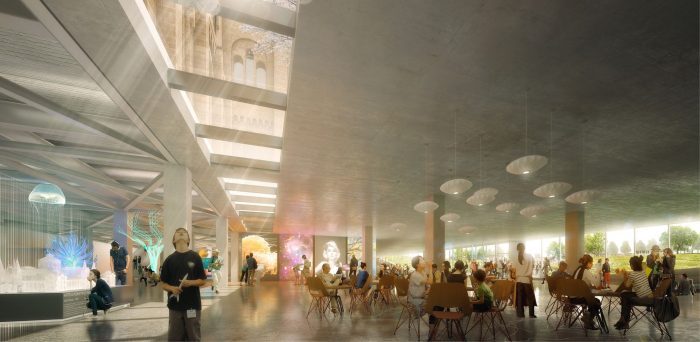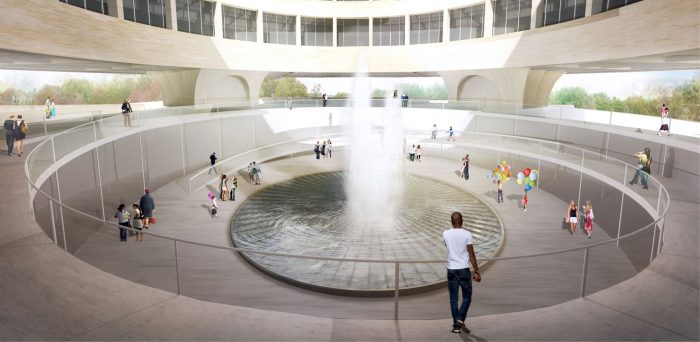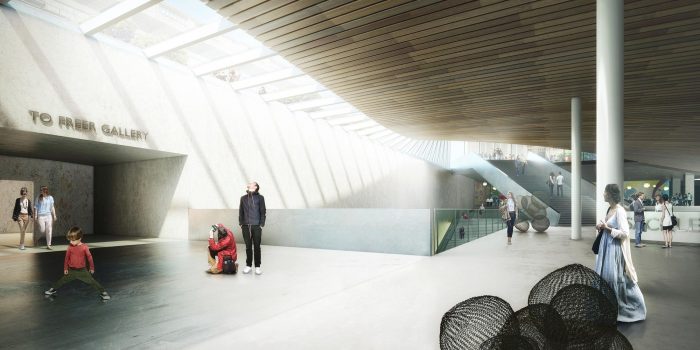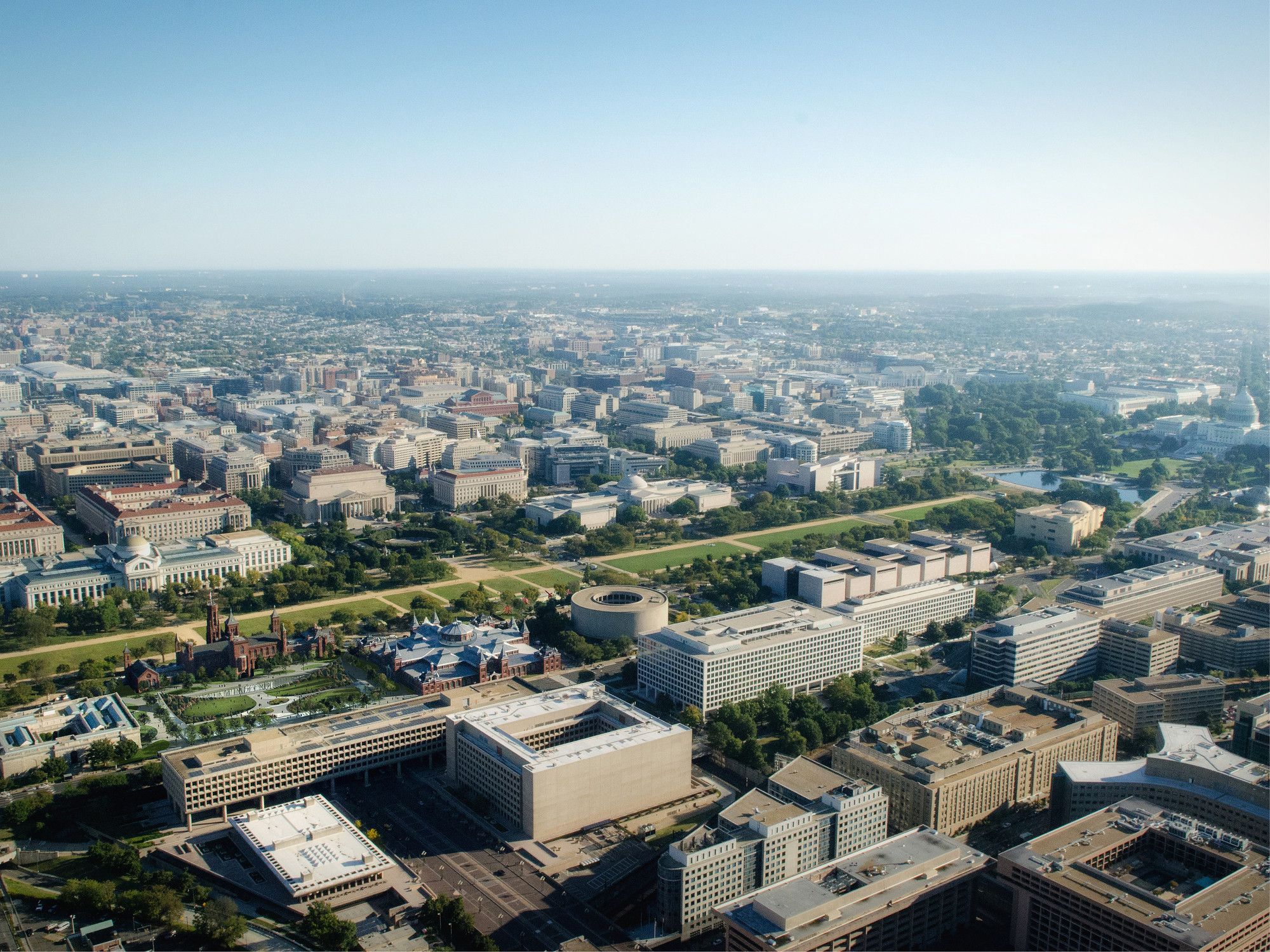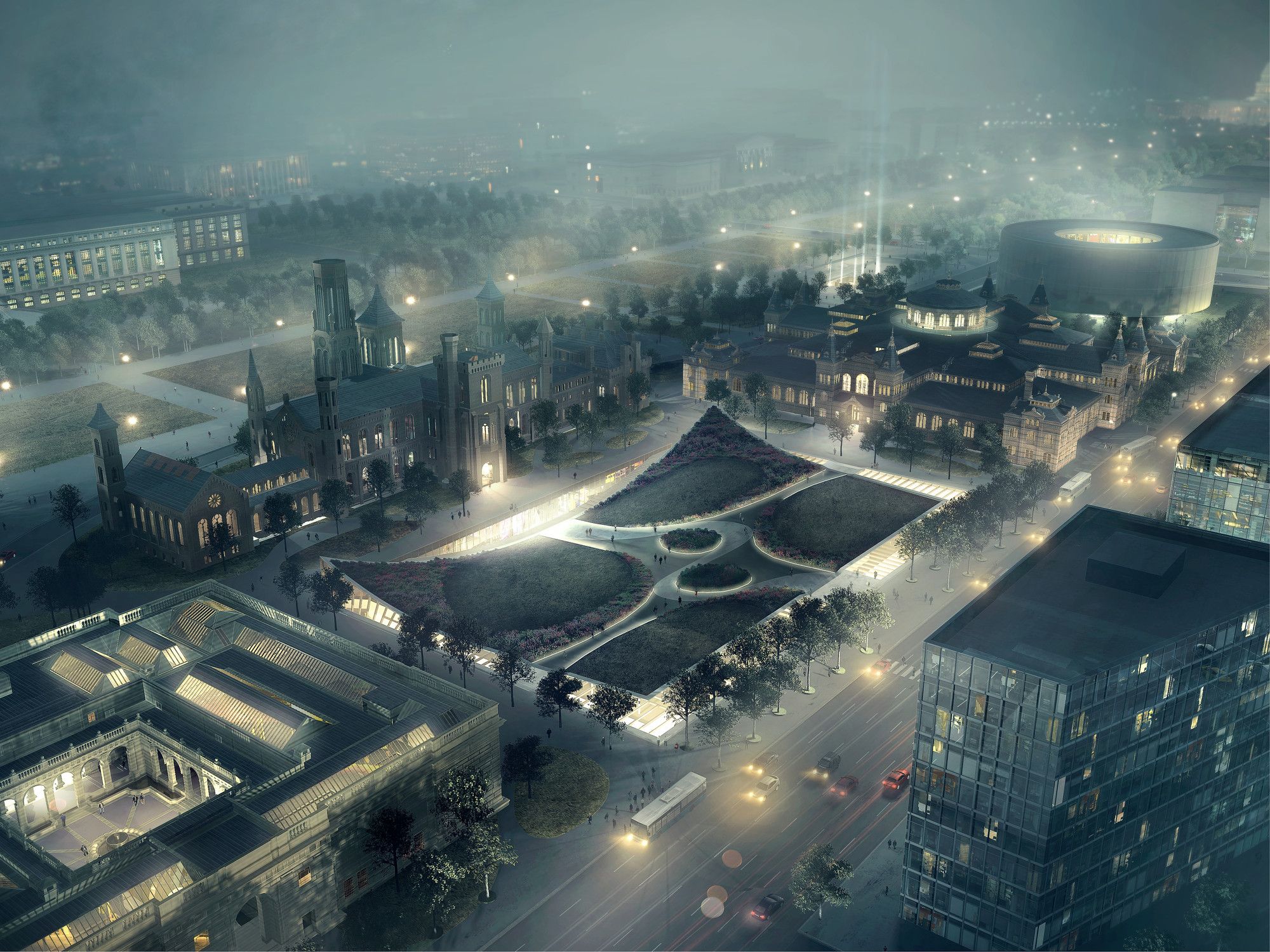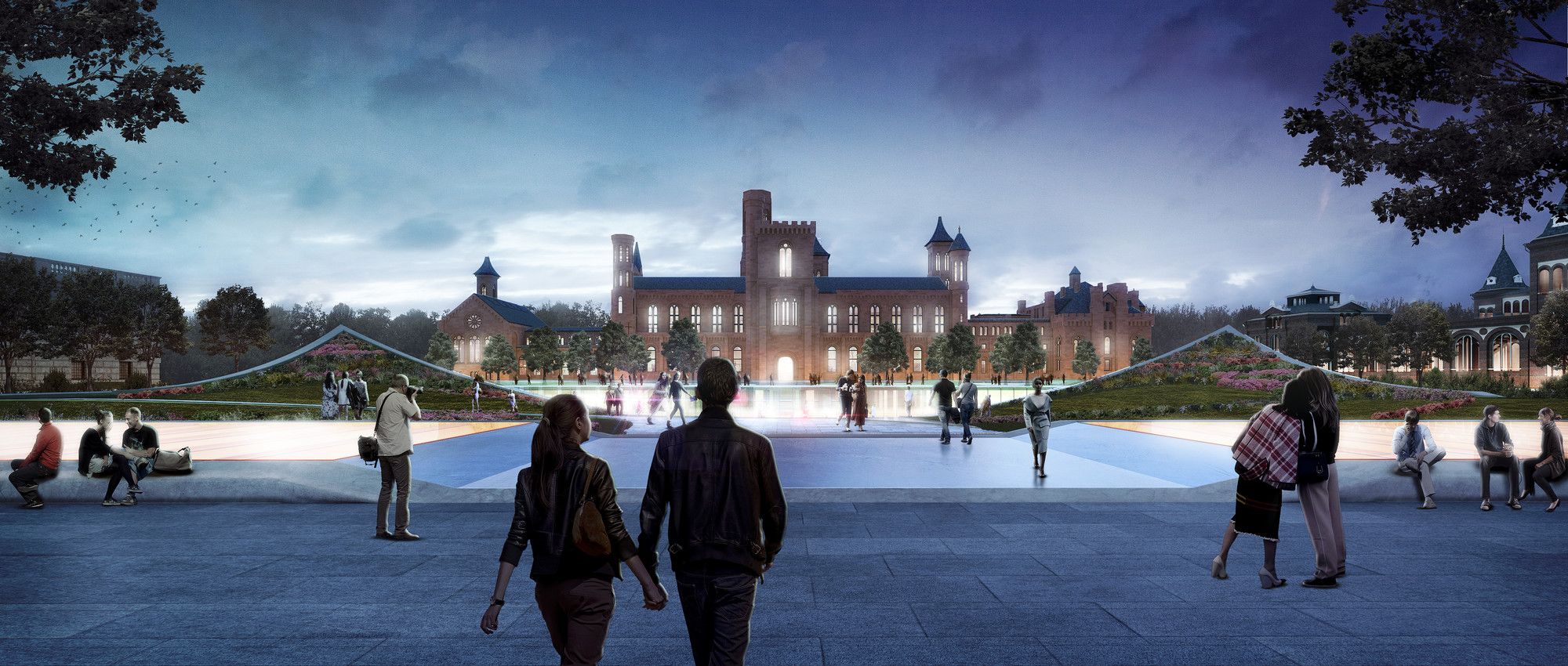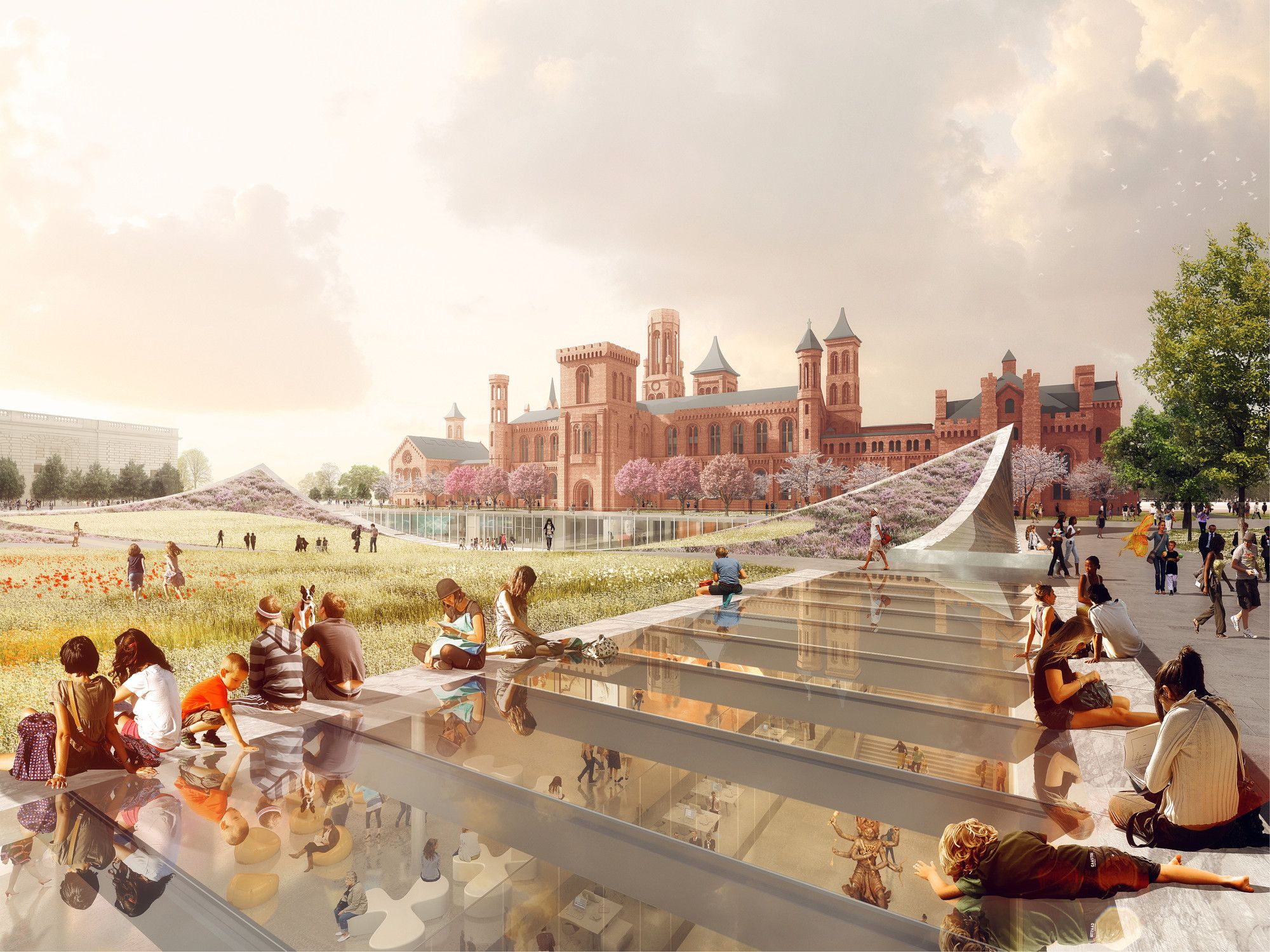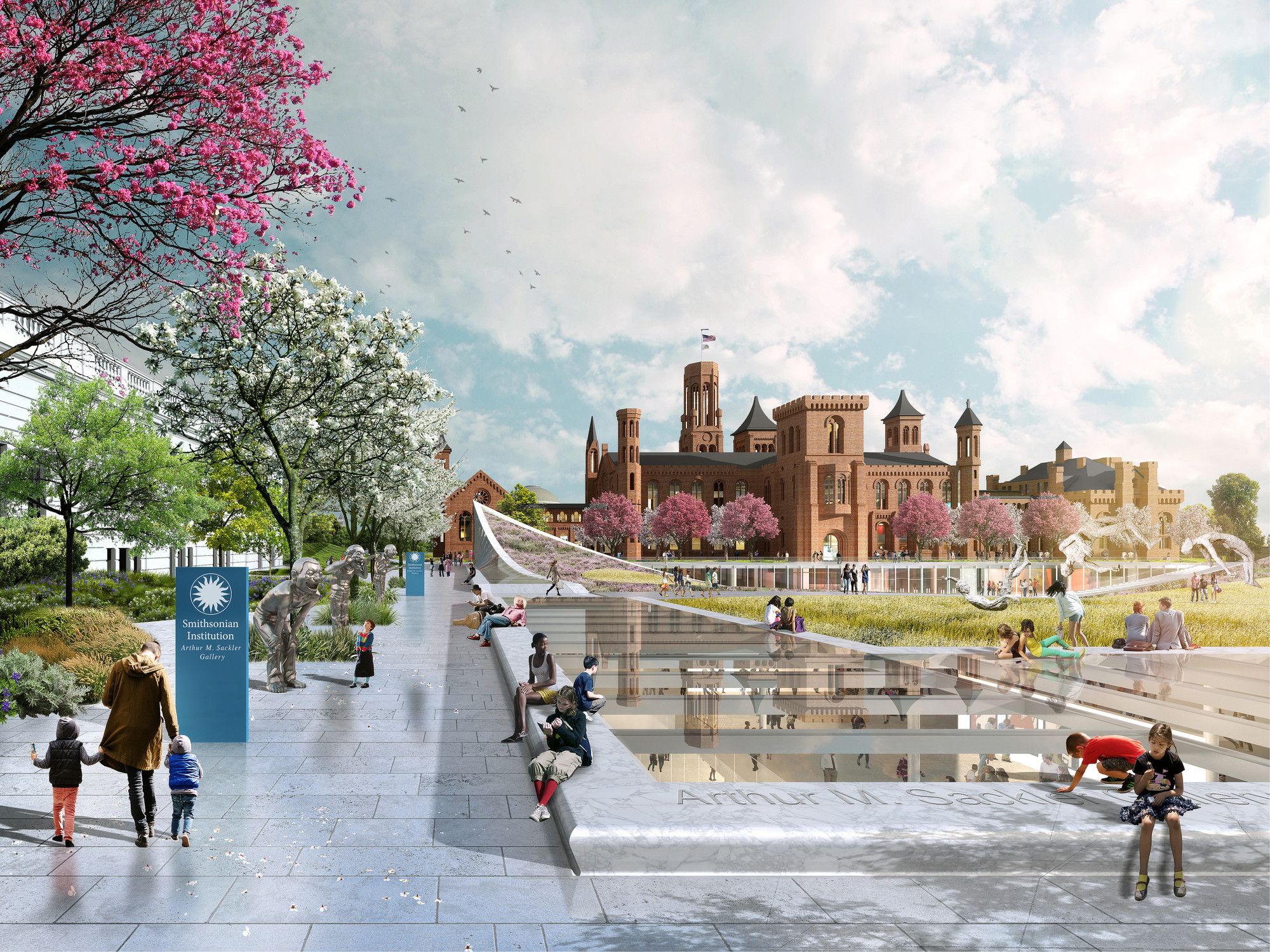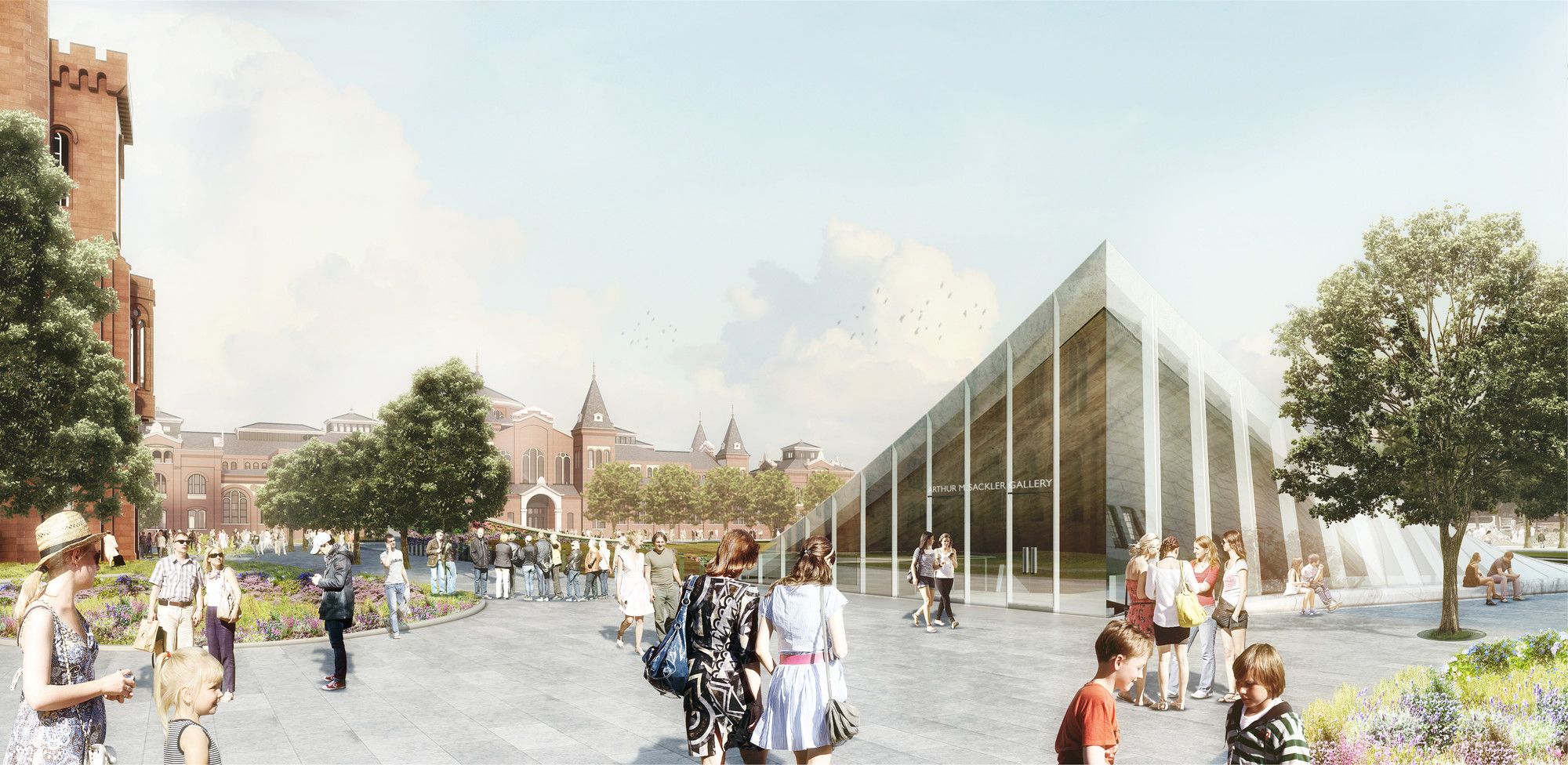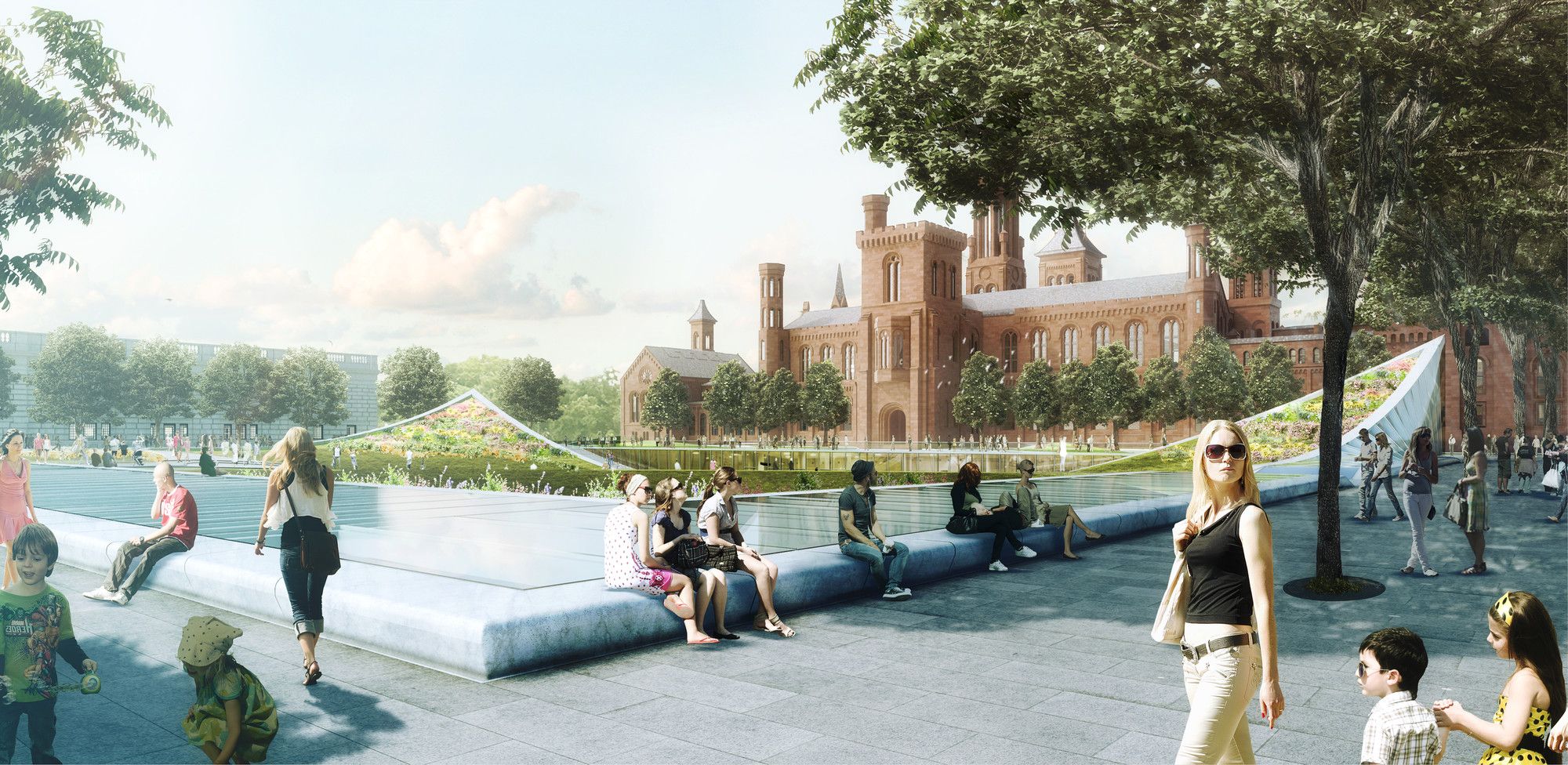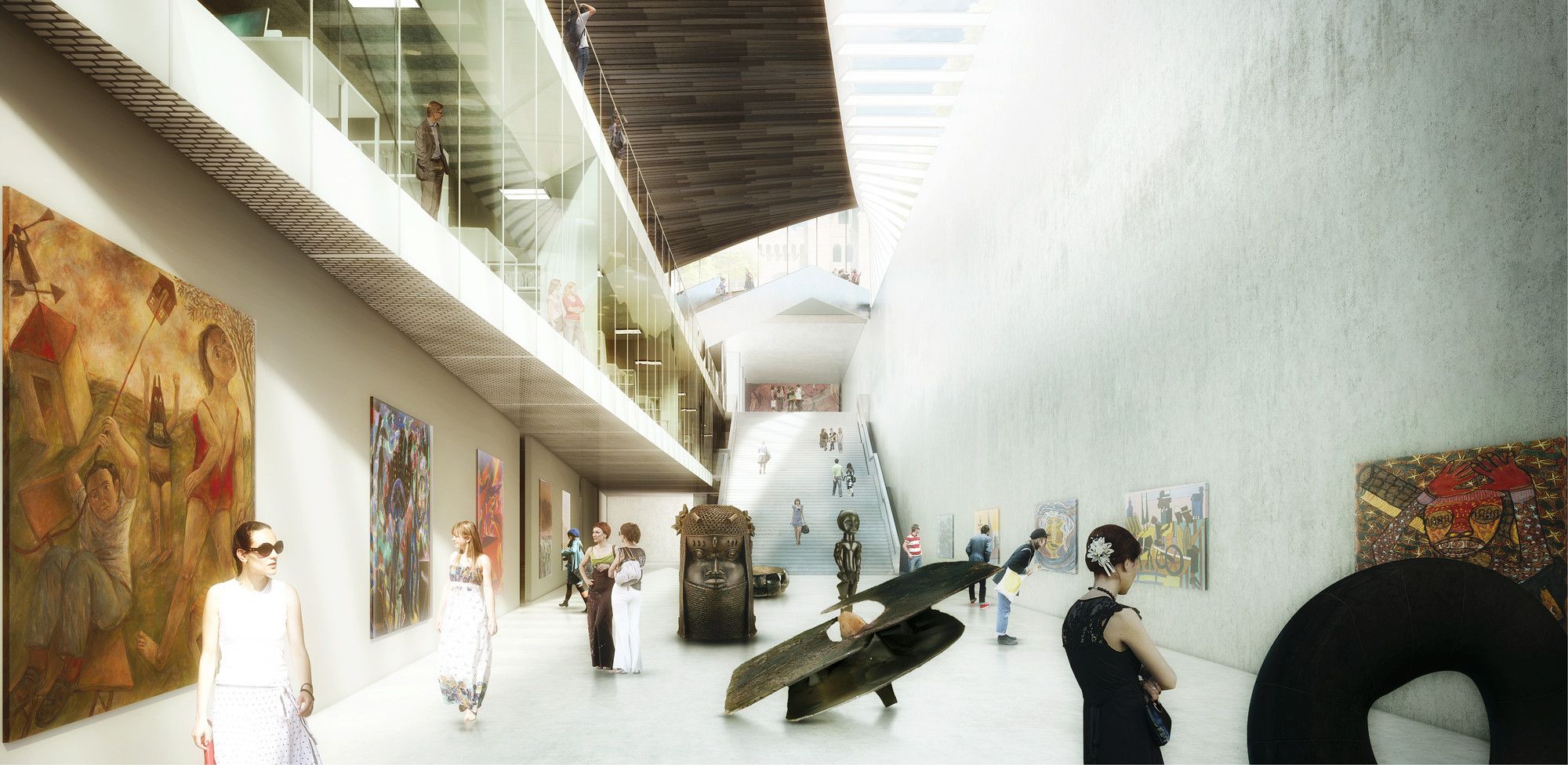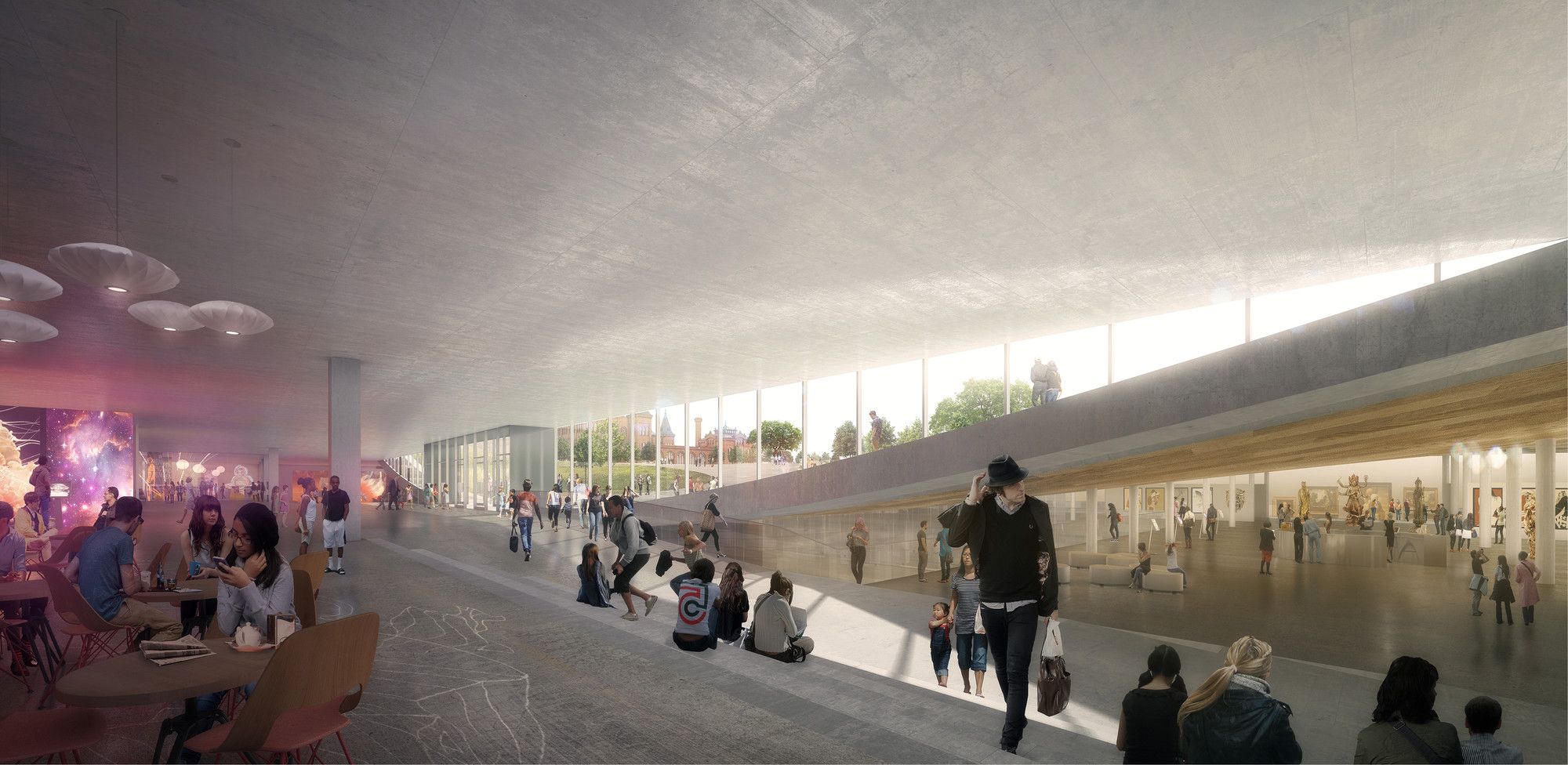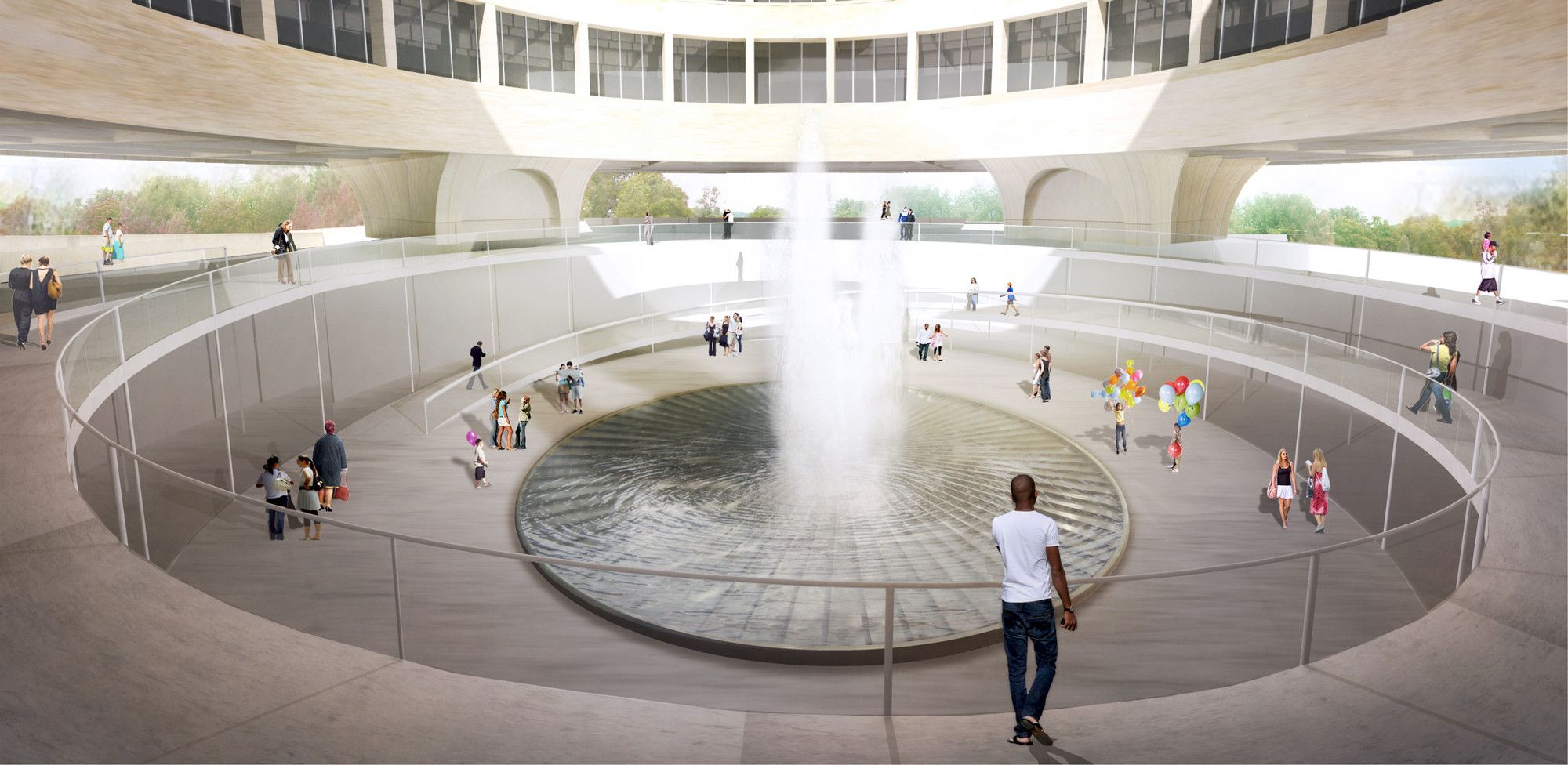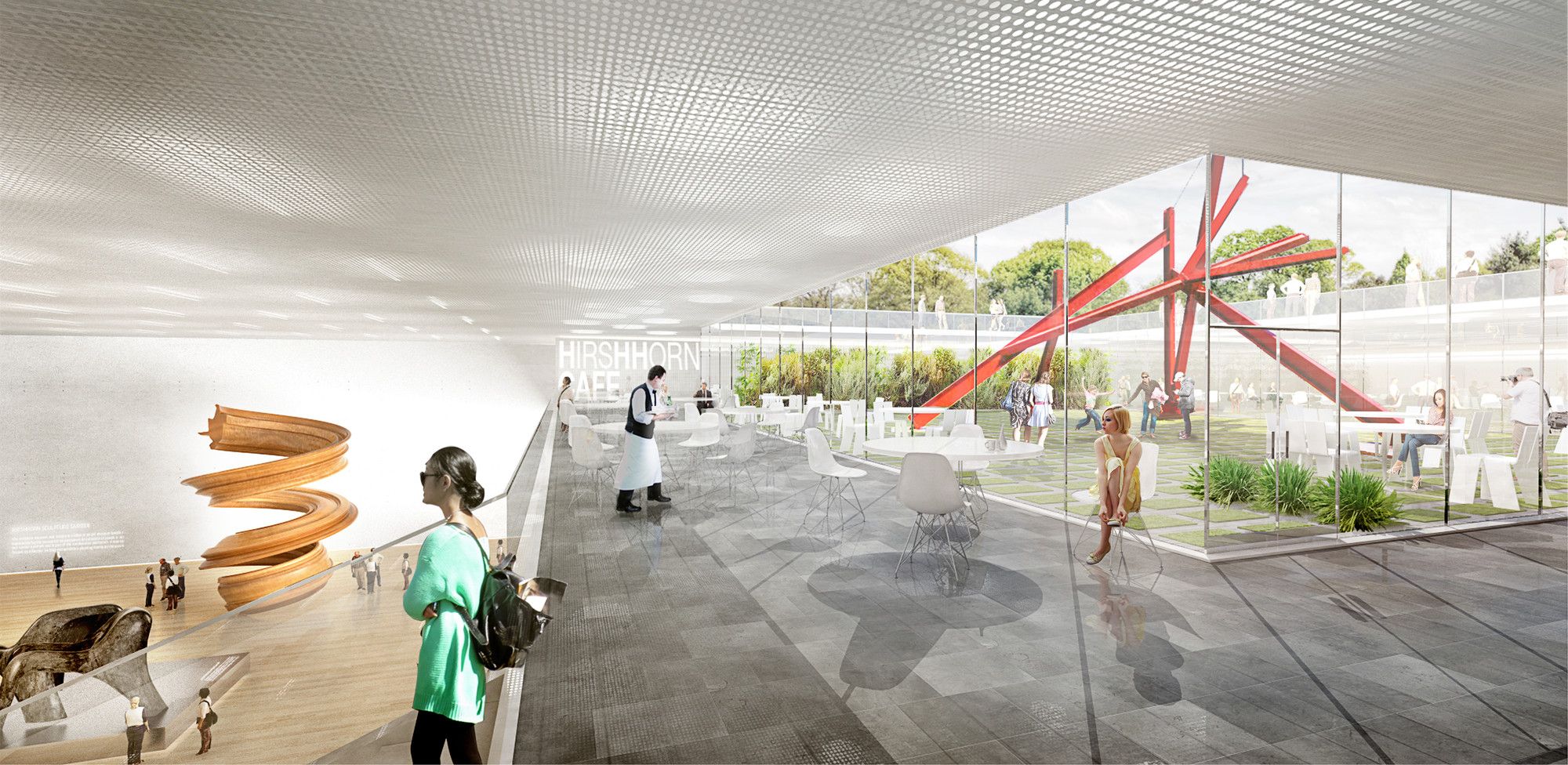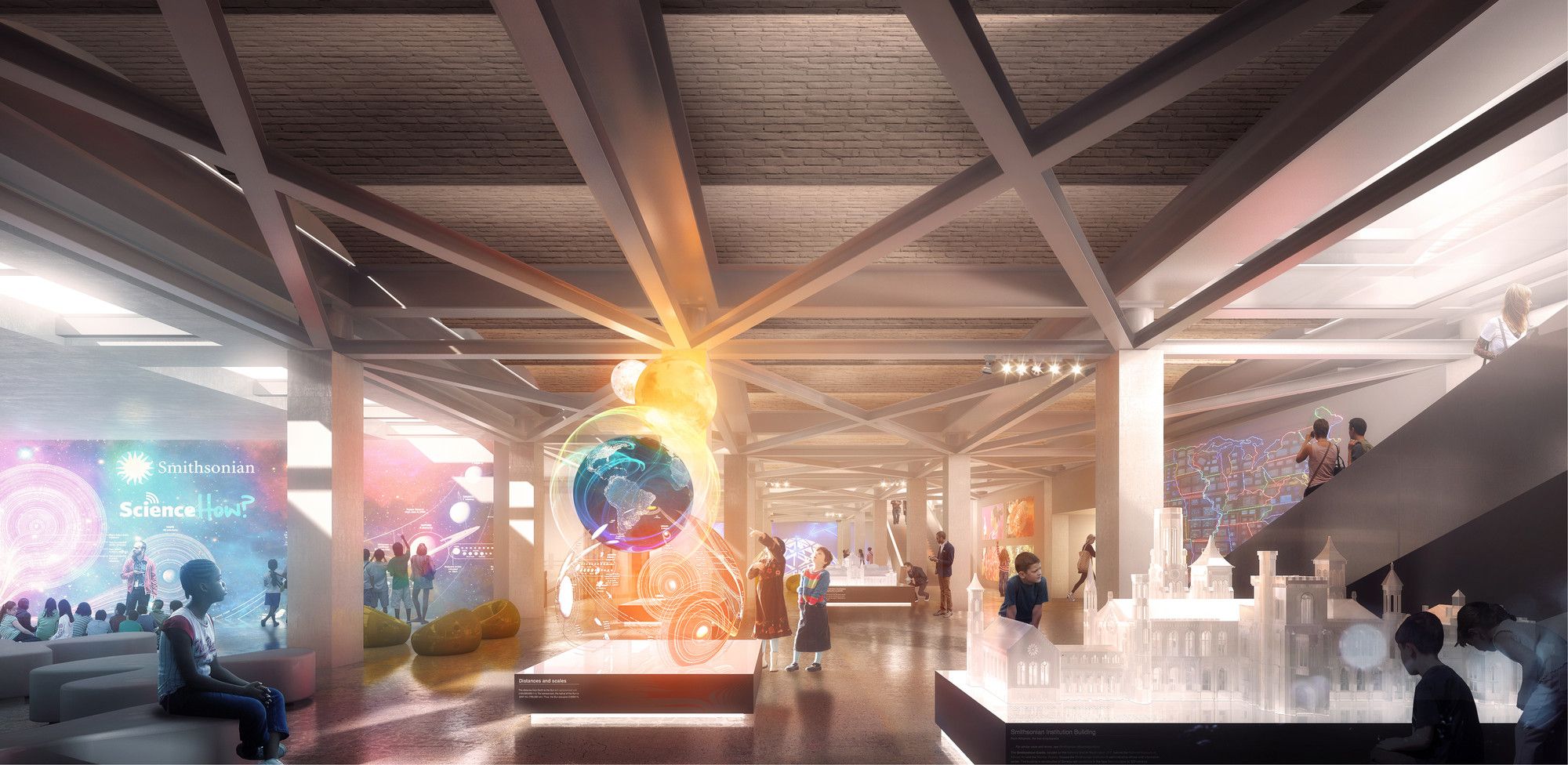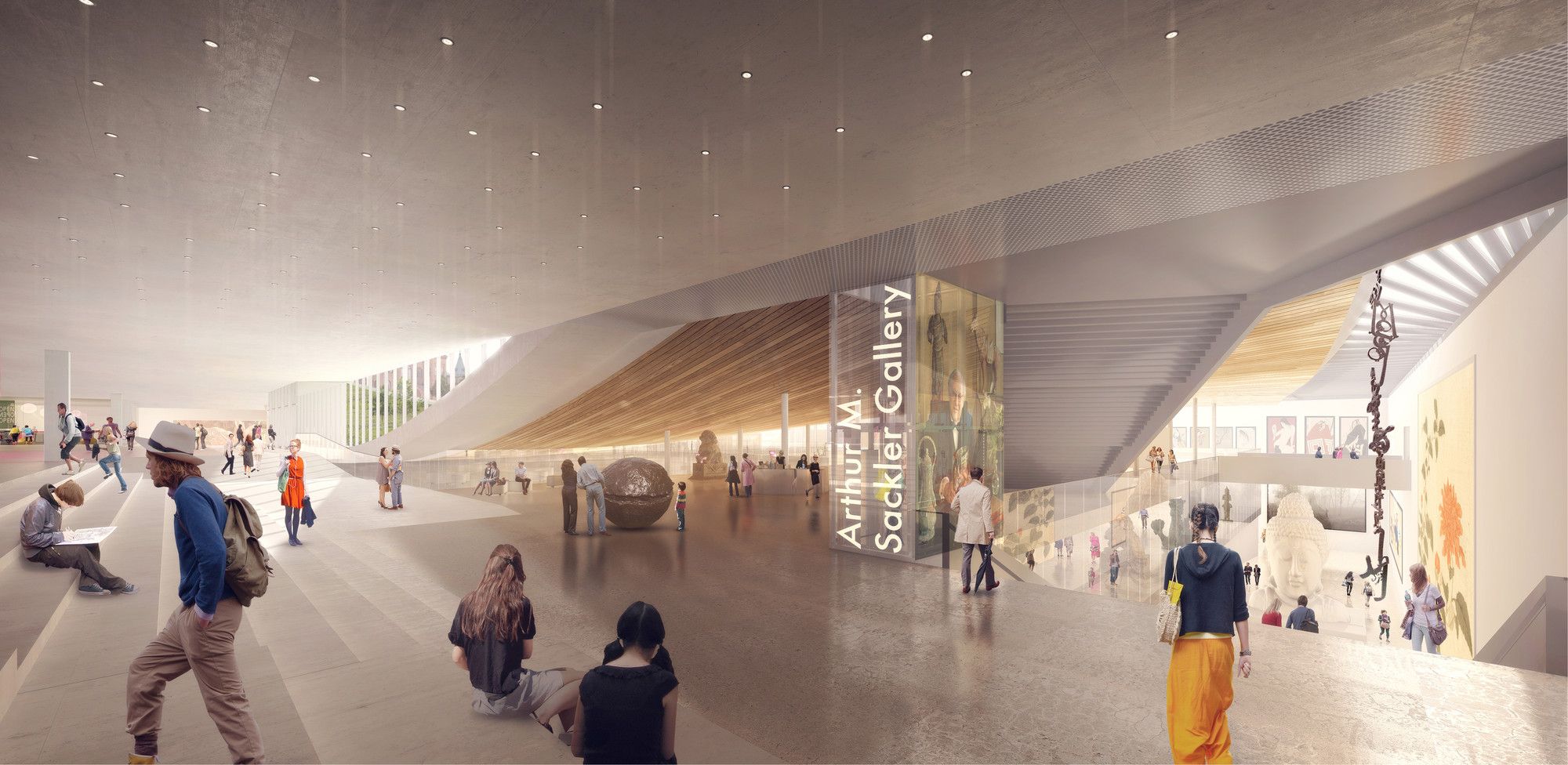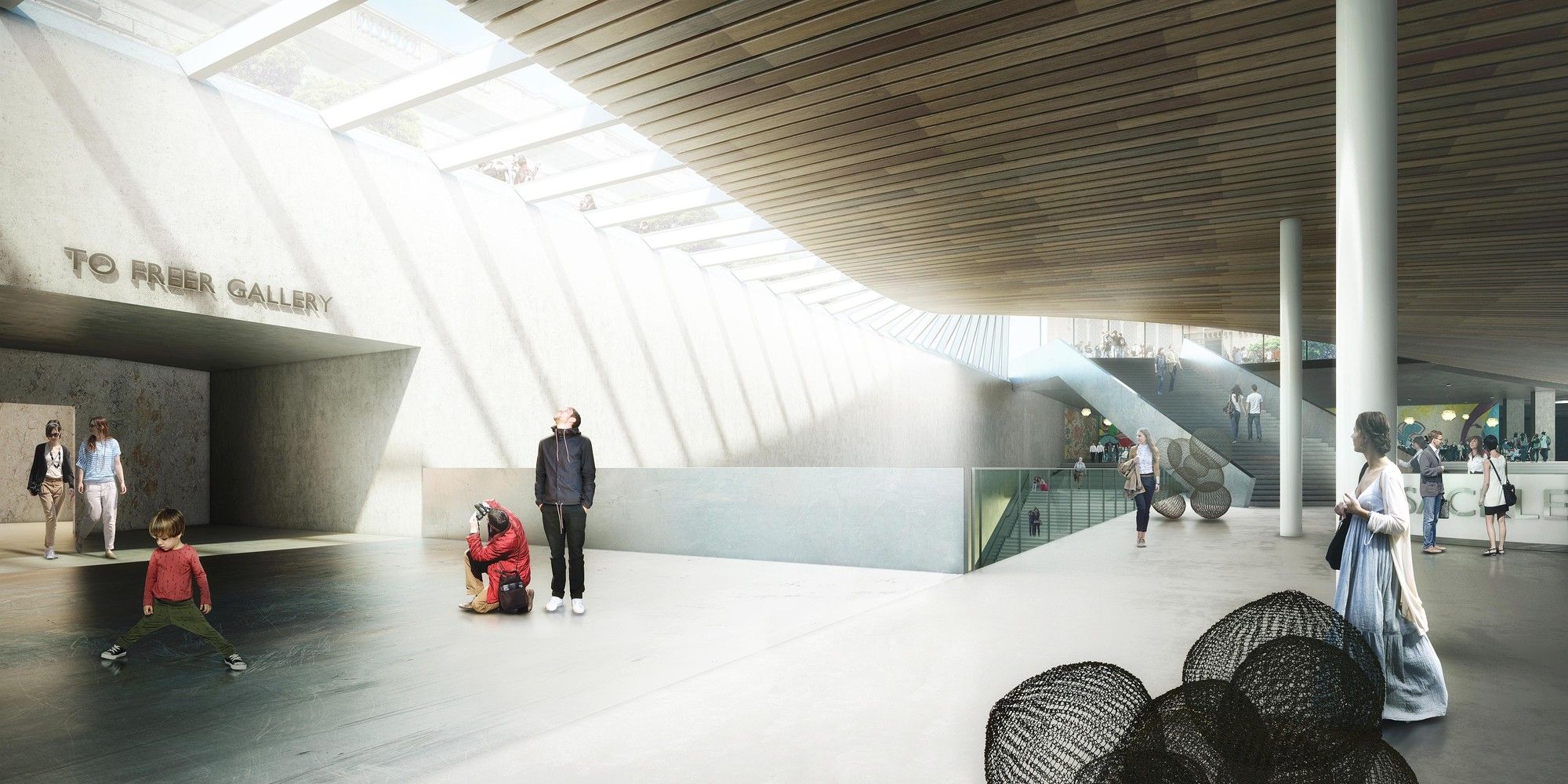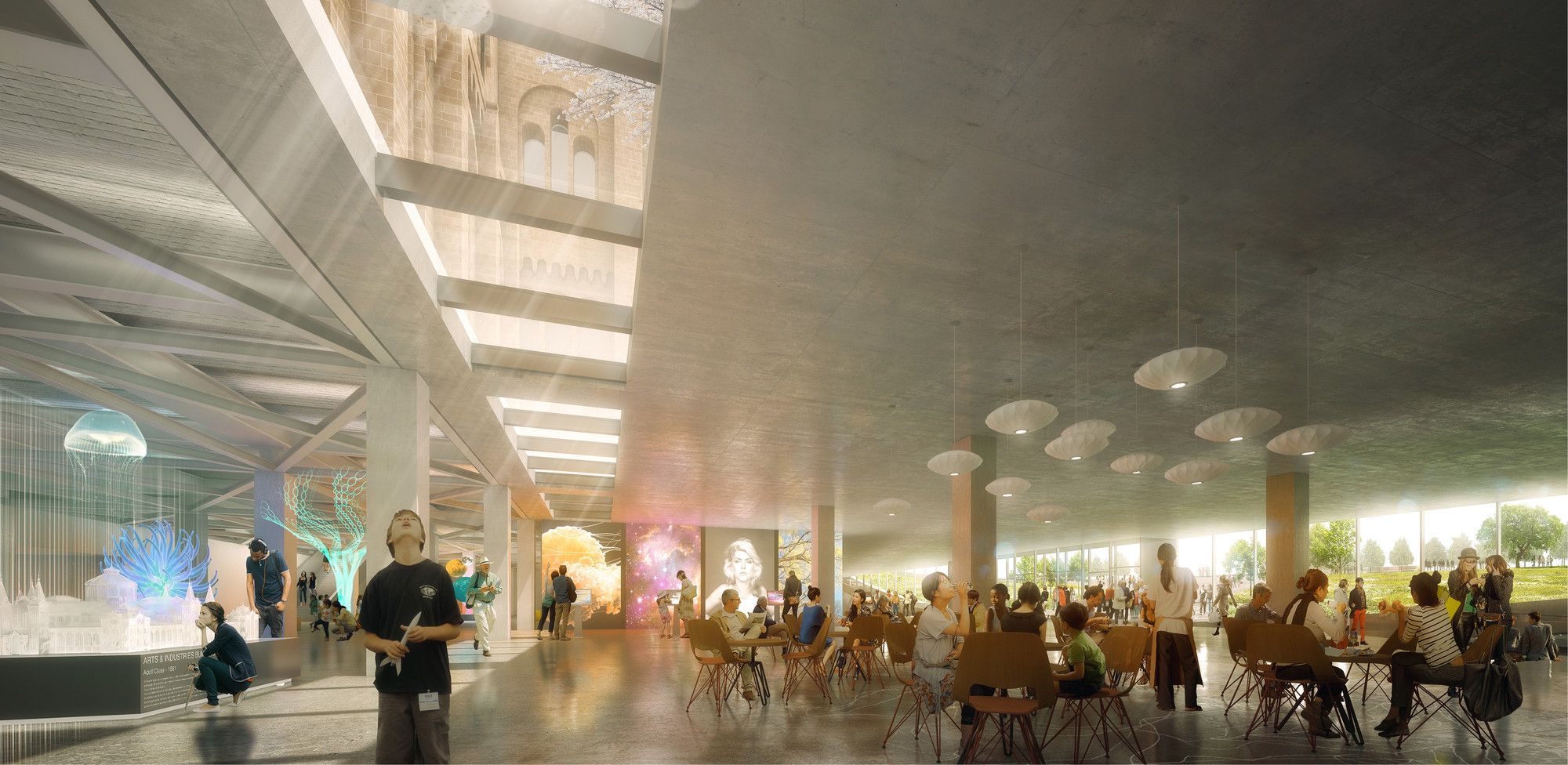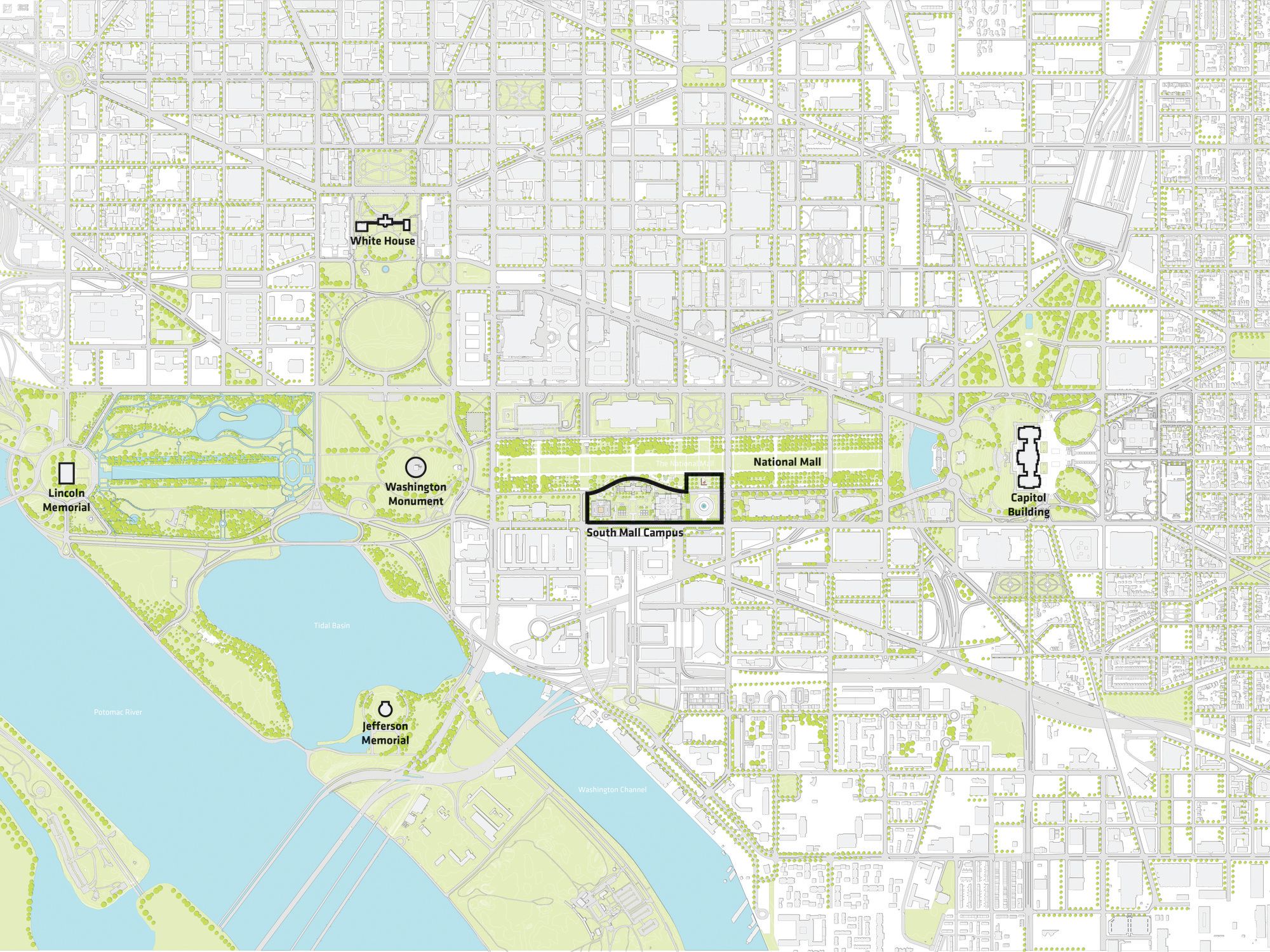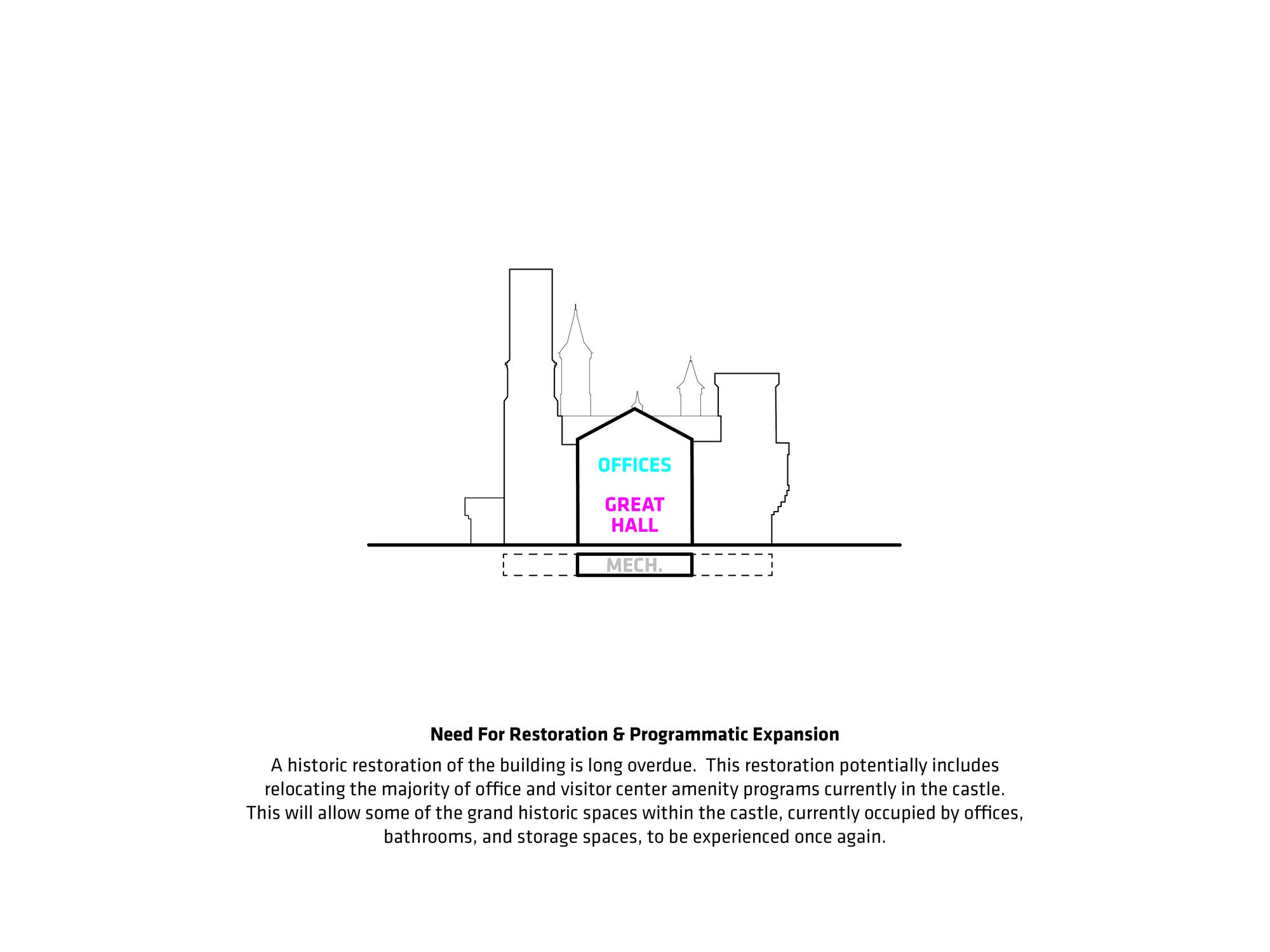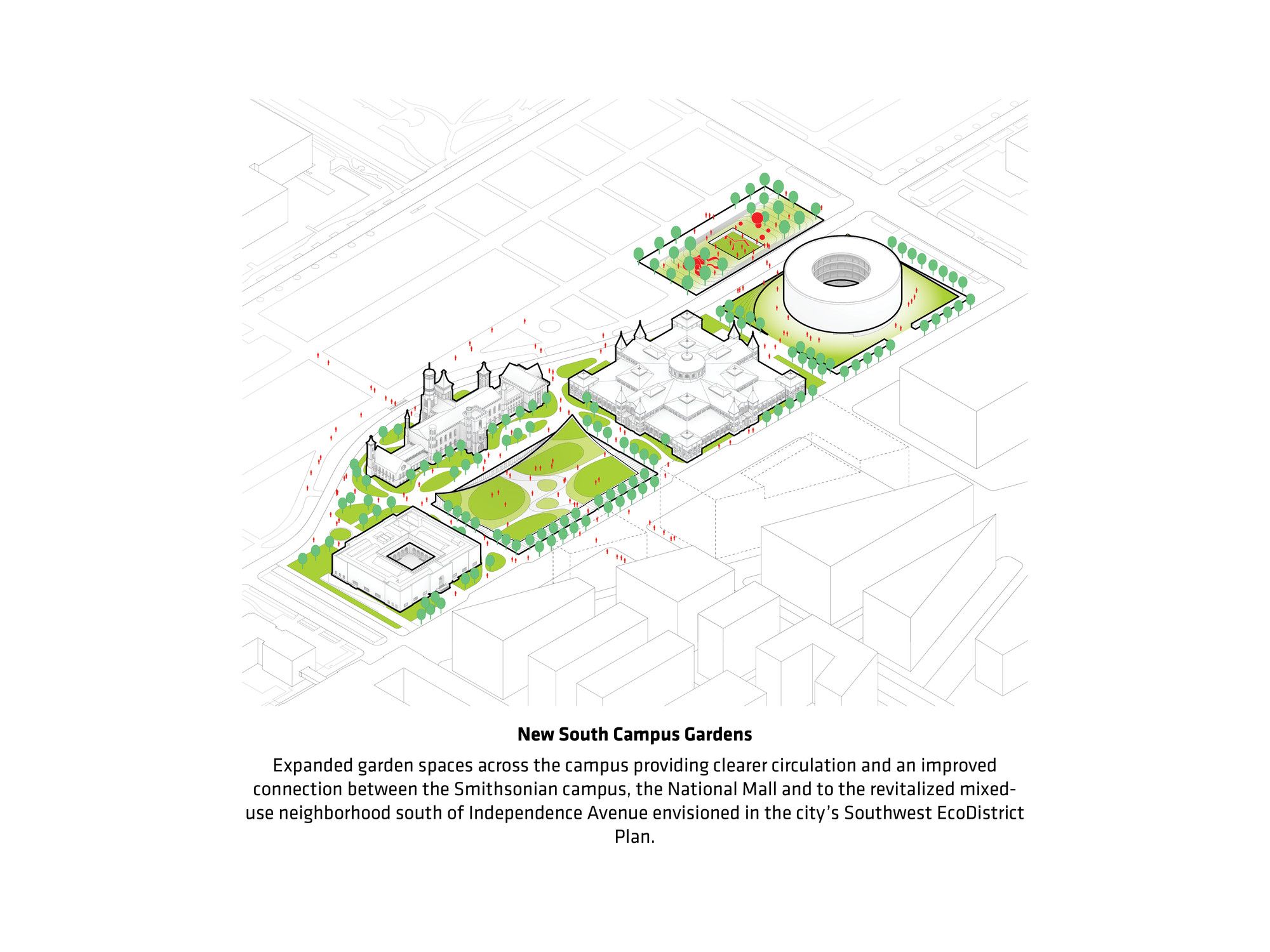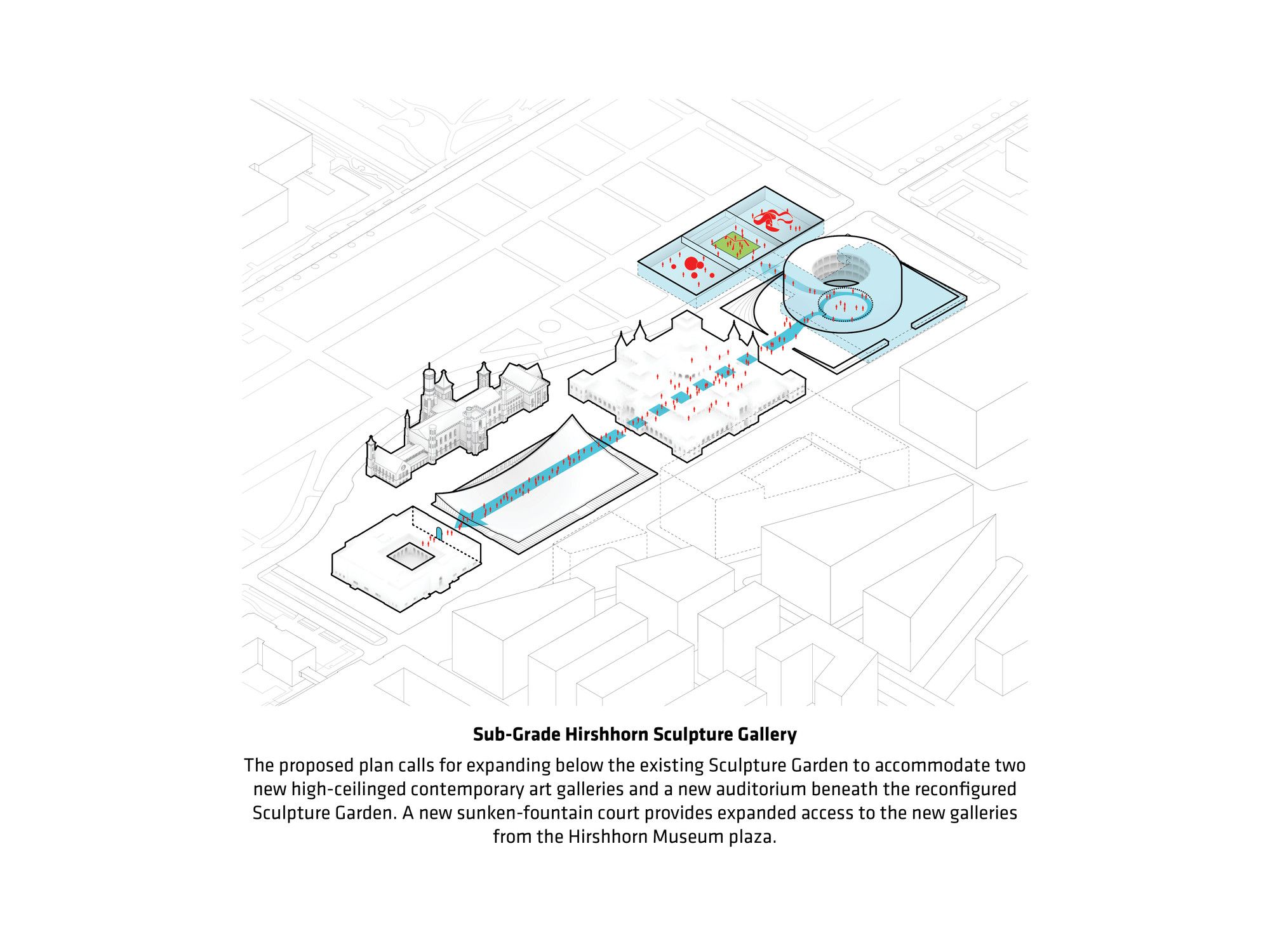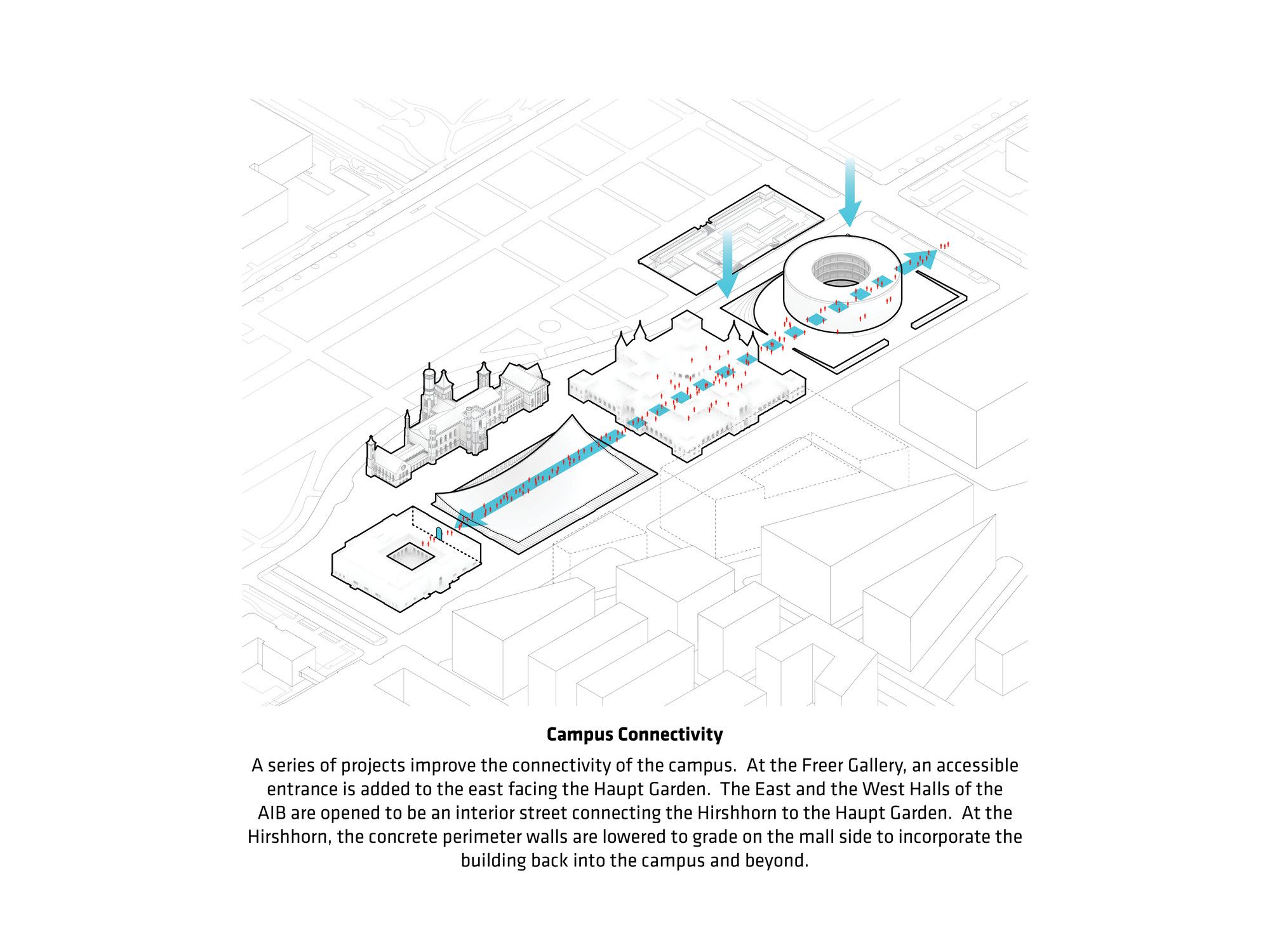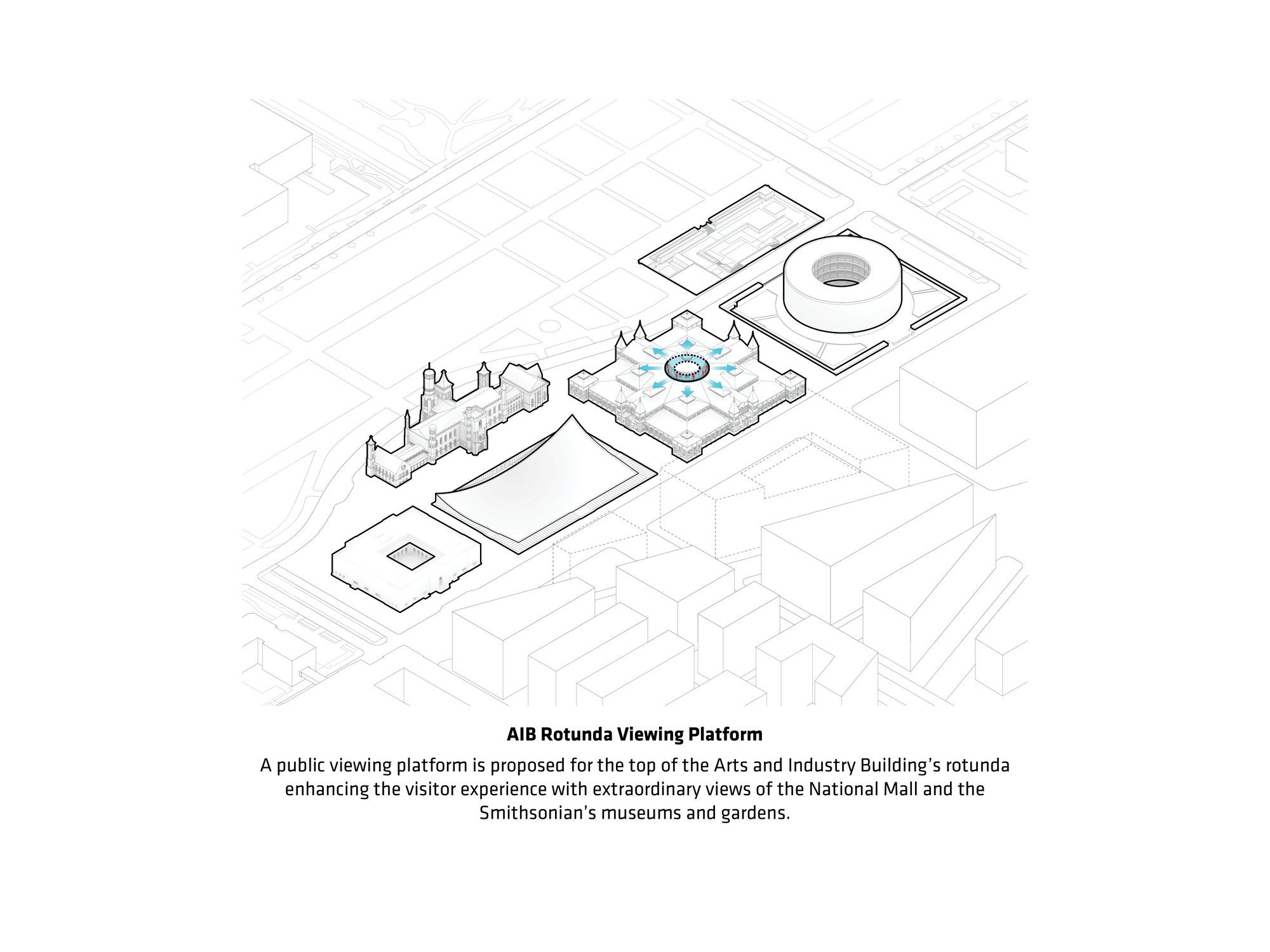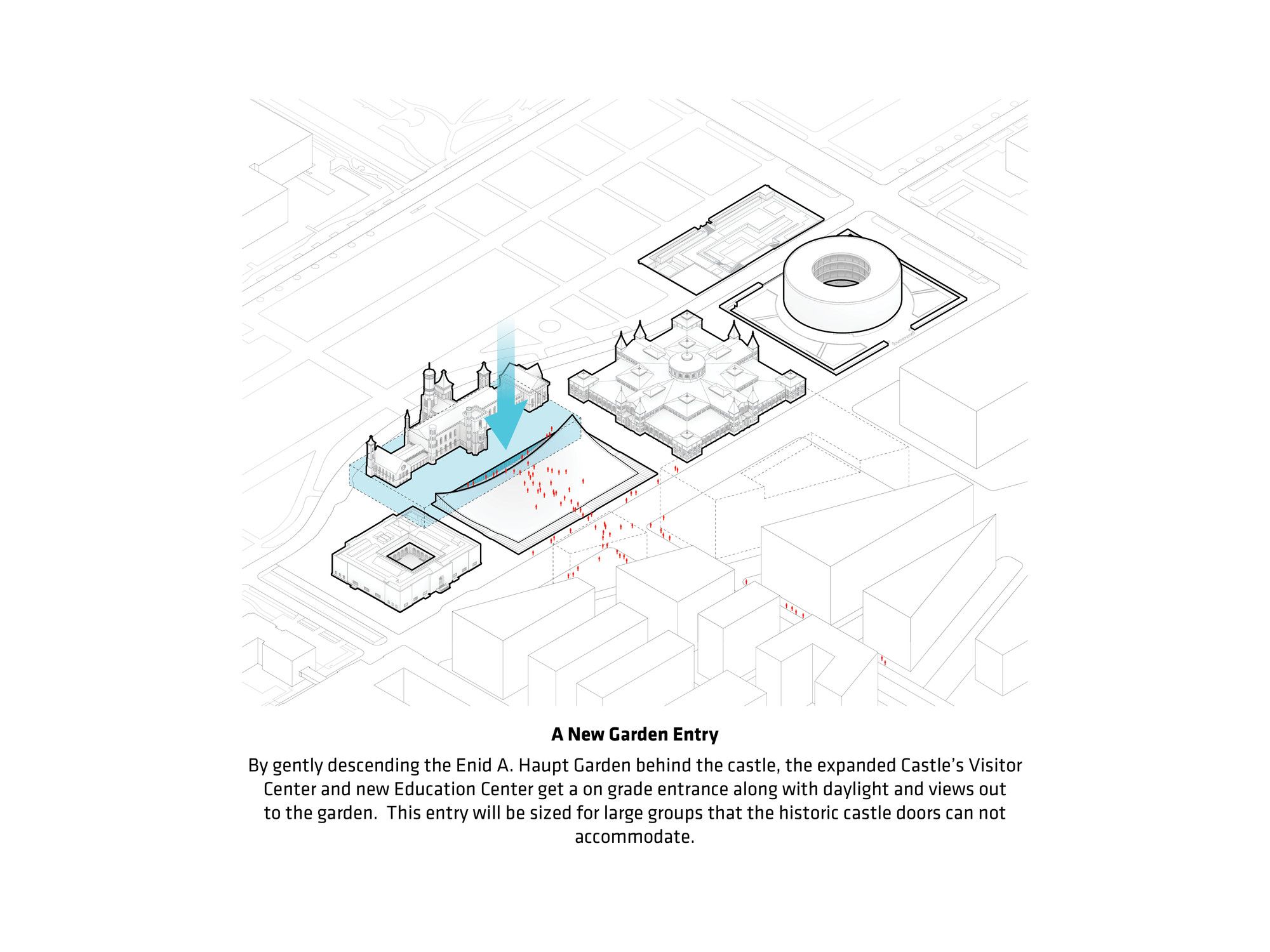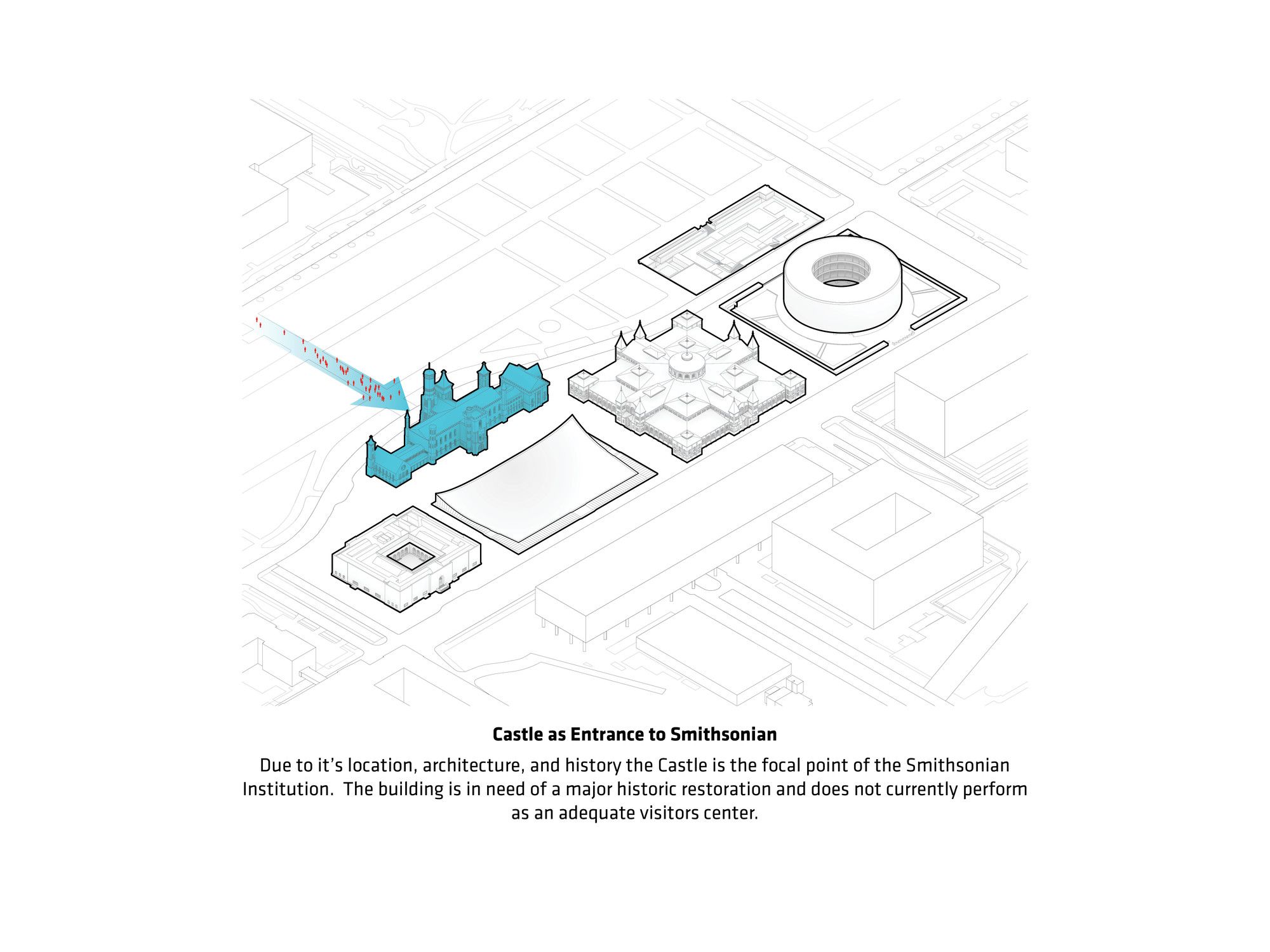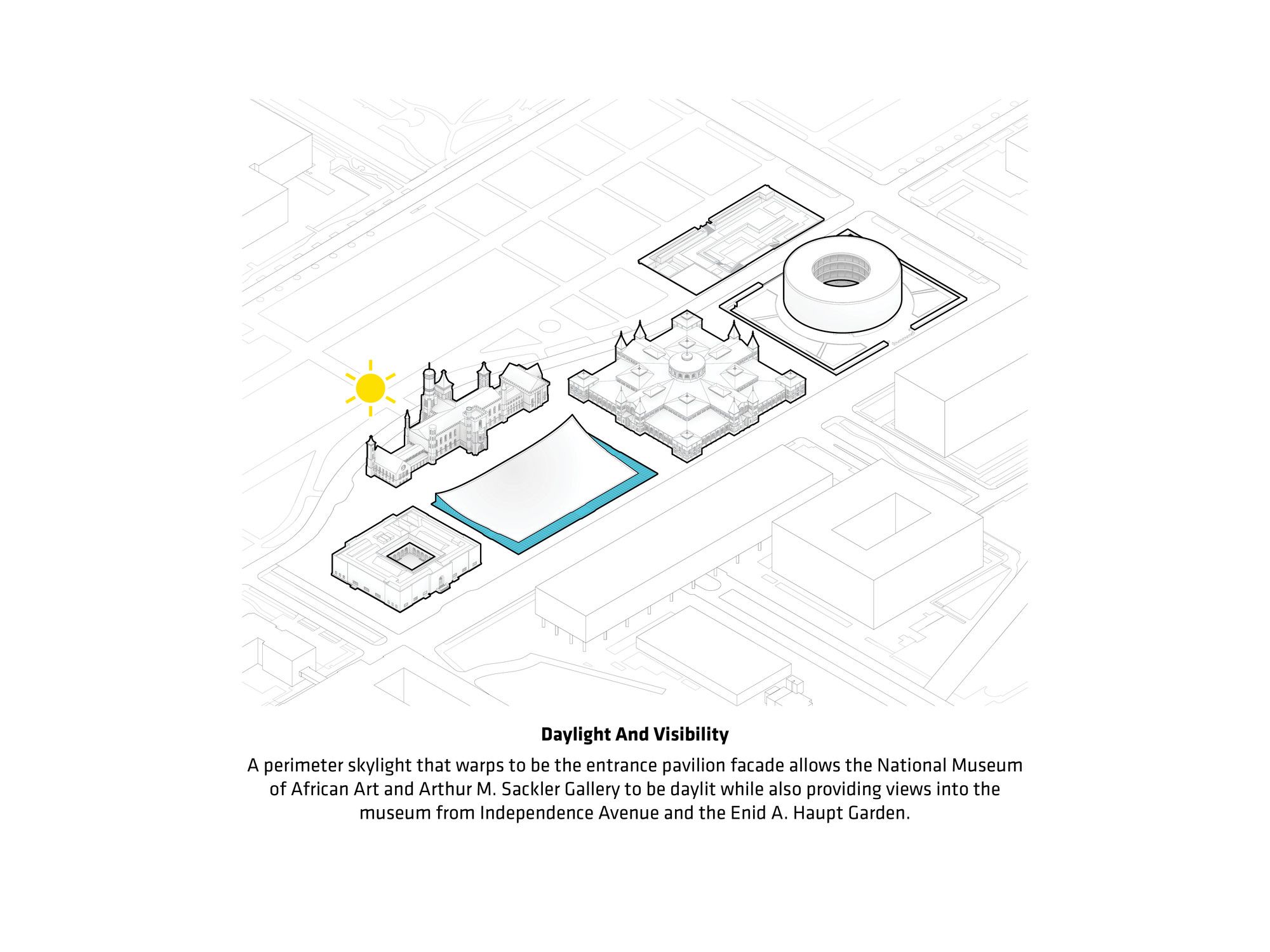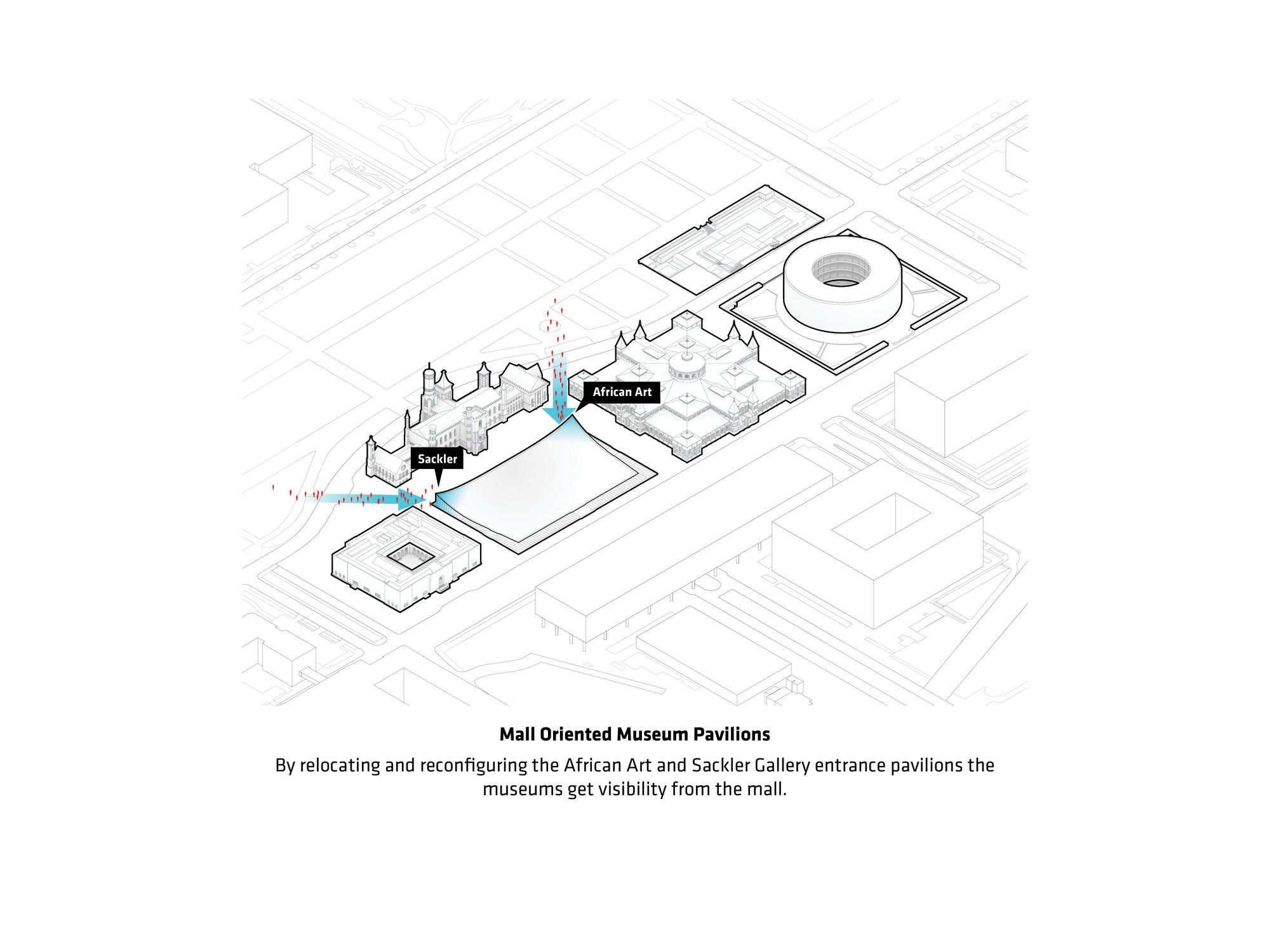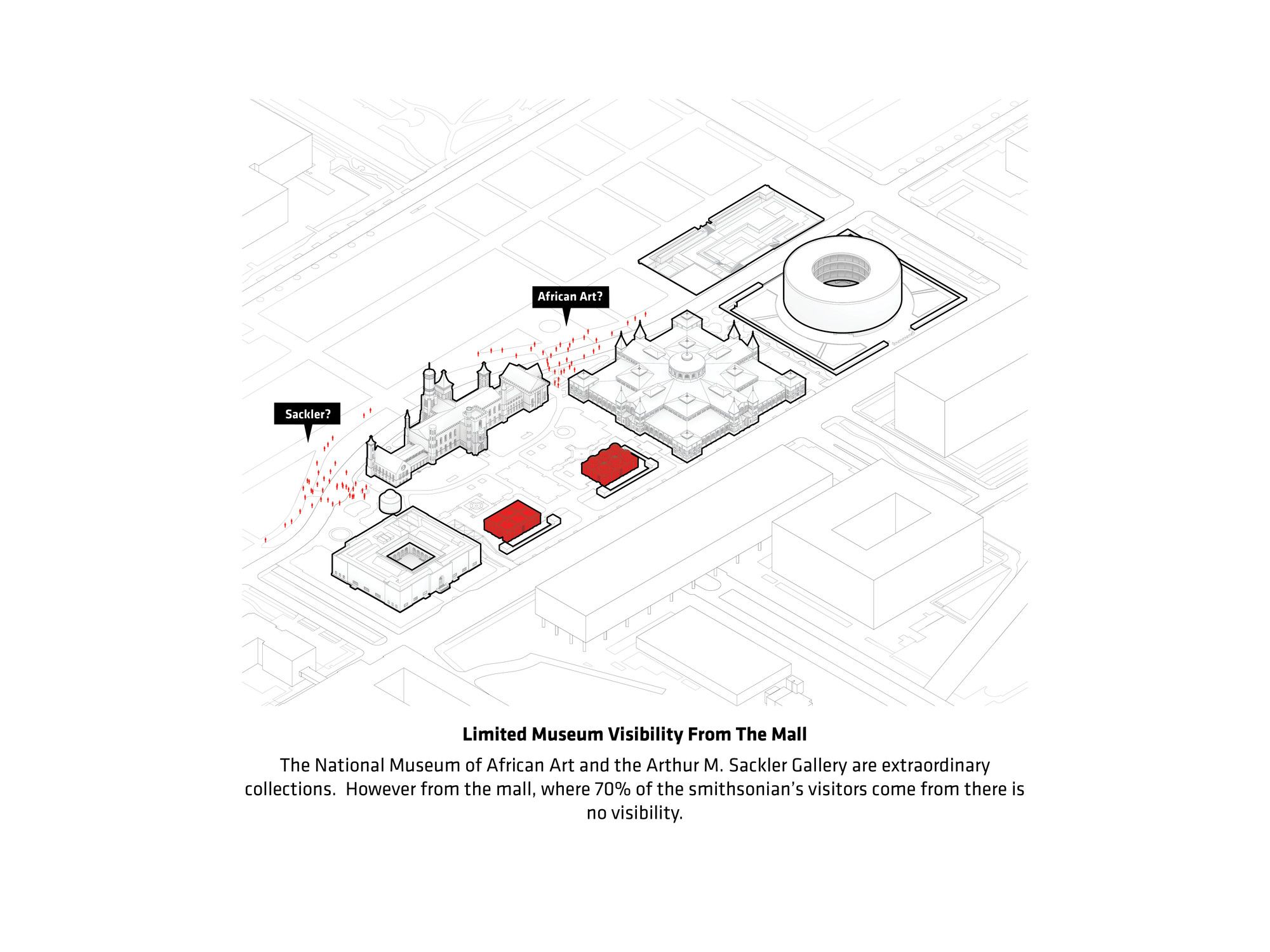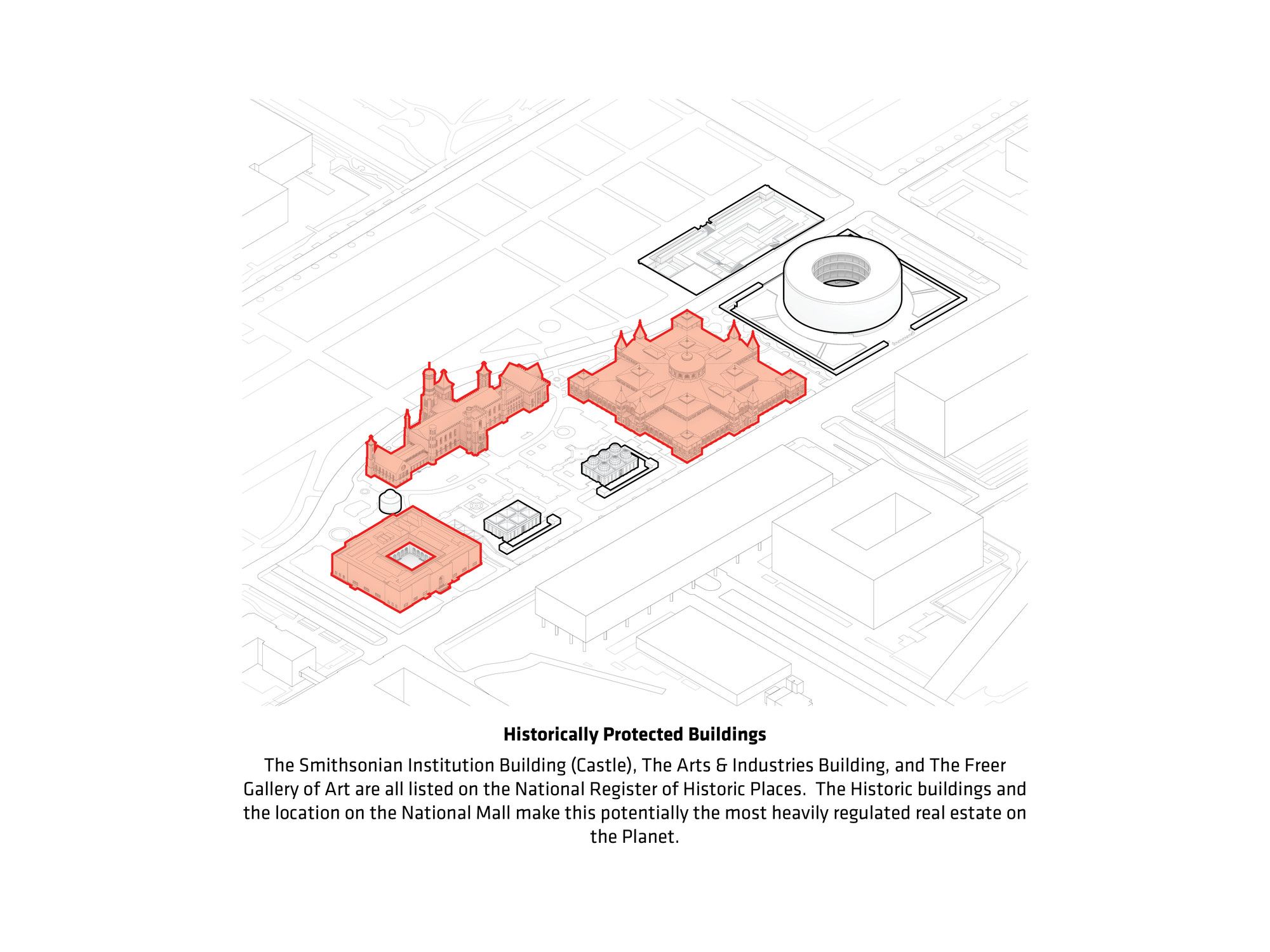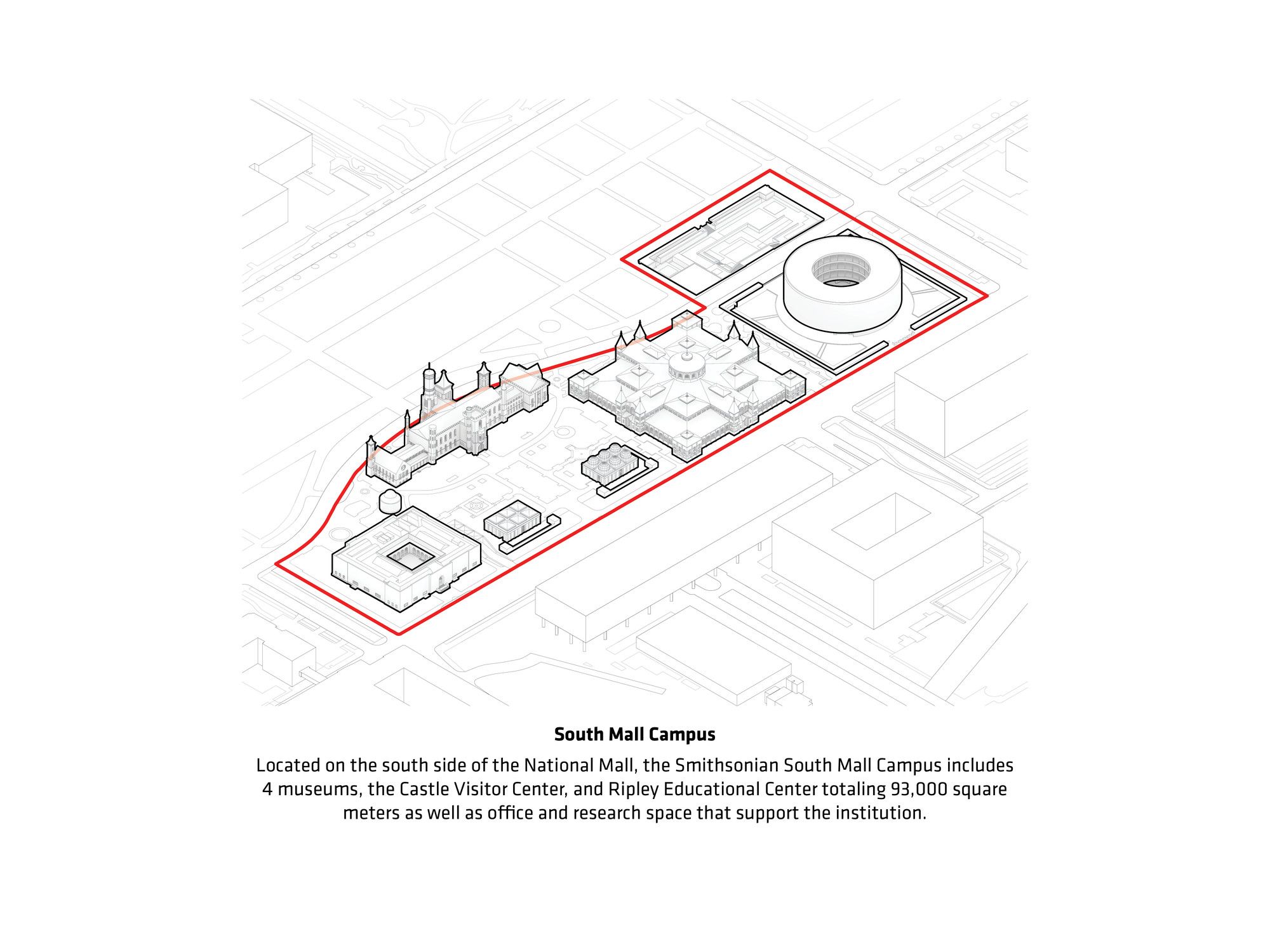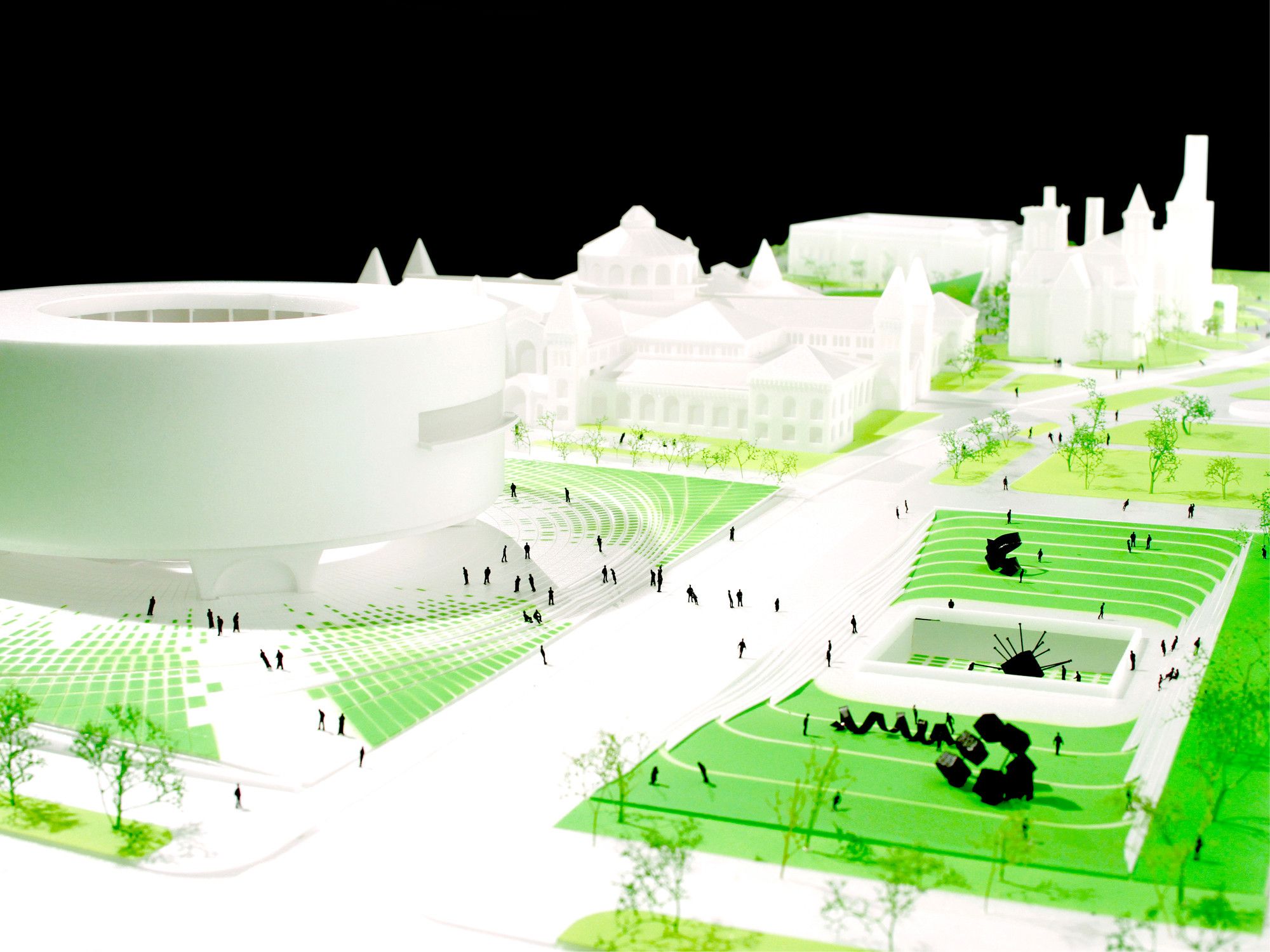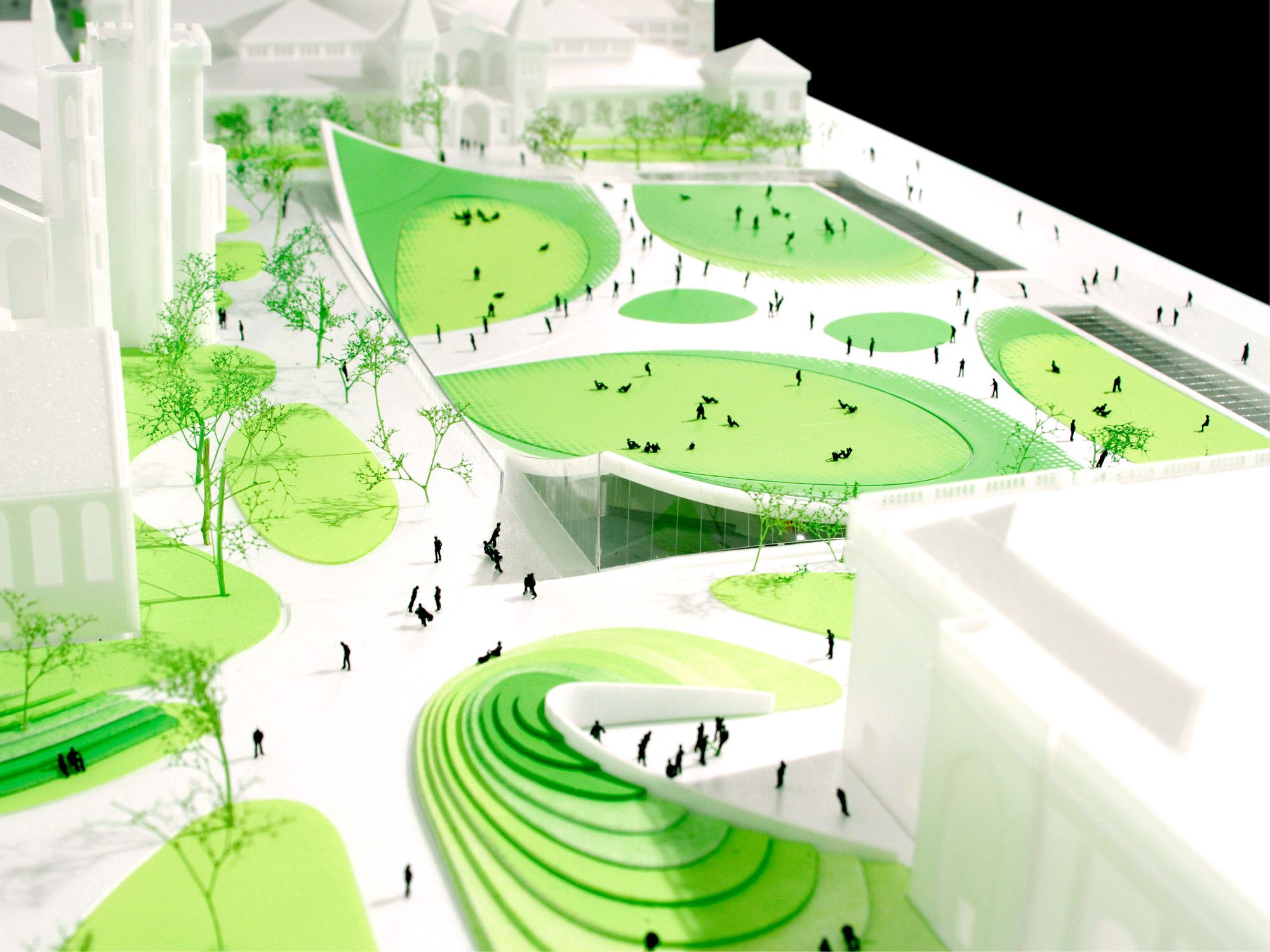Lately, one might get the impression that BIG Architects is taking over the architectural world. Their radical proposal for the Smithsonian Institution Campus in Washington DC is clearly an ambitious architectural gesture.
The plan is to restructure the existing institution, by creating new entrances and extensions, in order to upgrade its functions and transform it into a more user friendly building. The Smithsonian Castle, which was originally opened in 1855, and which currently serves as the Smithsonian’s headquarters, will be redesigned inside and out: the interior partitions that divide the space in half will be removed, and there will be a new underground space with cafes and shops, and there will be new mall-facing entrances to the National Museum of African Art and the Arthur M Sackler Gallery.
The plans for the new South Mall campus hold walkways in both underground territory and overground, creating dynamic means of passing from one building to another, along Independence Avenue. The proposal will create a space with plenty of natural light, including the underground level, by replacing existing pavilions with accesses with glass walls, and the roof of the building under Haupt Garden with glass as well.
The proposal’s aim is to keep the specific historical roots of the constructions, but to renew them through a method that is keen on connecting spaces and include as many natural elements as possible, such as the gardens and the spaces invaded by natural light, while also aiming to bring a larger number of visitors to the complex.
The 2 billion dollar proposal from Bjarke Ingels Group will bring together the separate elements in the site, by creating “an open, intuitive and inviting campus to meander around”, while definitely being, as the architect has stated, a “radical proposal”.
By:Lidia Ratoi
Courtesy of BIG
Courtesy of BIG
Courtesy of BIG
Courtesy of BIG
Courtesy of BIG
Courtesy of BIG
Courtesy of BIG
Courtesy of BIG
Courtesy of BIG
Courtesy of BIG
Courtesy of BIG
Courtesy of BIG
Courtesy of BIG
Courtesy of BIG
Courtesy of BIG
Courtesy of BIG
Courtesy of BIG
Courtesy of BIG
Courtesy of BIG
Courtesy of BIG
Courtesy of BIG
Courtesy of BIG
Courtesy of BIG
Courtesy of BIG
Courtesy of BIG
Courtesy of BIG
Courtesy of BIG
Courtesy of BIG
Courtesy of BIG
Courtesy of BIG
Courtesy of BIG


